Todd’s Top 10
by Todd Wodd, General Manager 1984–2020

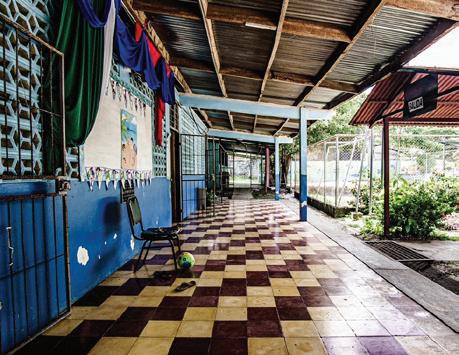

Hello, all you Cooperators! And thanks to those of you who came to celebrate the Co-op’s Golden Jubilee. As you know, I was at the Co-op for many of its fifty years and have spent countless hours talking about the Co-op to new staff, and old staff, and most anyone who would listen. And now to you.
To help me figure out what a person might want to know about the last fifty years, I leaned on longtime staff member and Natural Enquirer contributor, Bev Faxon, to come up with a few questions. How did the Co-op even come about?
You’ll have to go back to the ‘60s and look at the big picture. The Vietnam War was taking place. You had the movement for women’s rights. And you had the struggle for racial equity. There was no shortage of things to protest. The classic American paradigm was being questioned, and social activism was in high gear. On another track was a new awareness of all the environmental threats. Rachael Carson’s classic Silent Spring sent a siren call that the world was in danger and that change was imperative.
While these were all huge issues, there was a simultaneous movement that was more personal. The popular phrases “You Are What You Eat” and “Be Here Now” reflected the growing trend toward wholesomeness, both of body and soul. Hundreds of thousands of people embarked on new lifestyles, moving to the country, growing an organic garden, living in communities, and eating wholesome natural foods, which were scarce and difficult to obtain.
So, we take a bunch of dreamers and social activists, bring them out of the hills to gather, eat a bunch of exotic food – like brown rice – season all this with somebody’s homegrown and what do you get? “Hey! Why don’t we open a small natural foods co-op?”
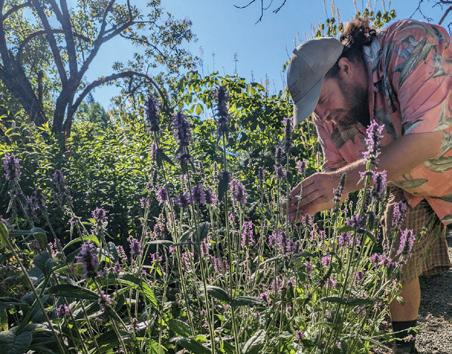
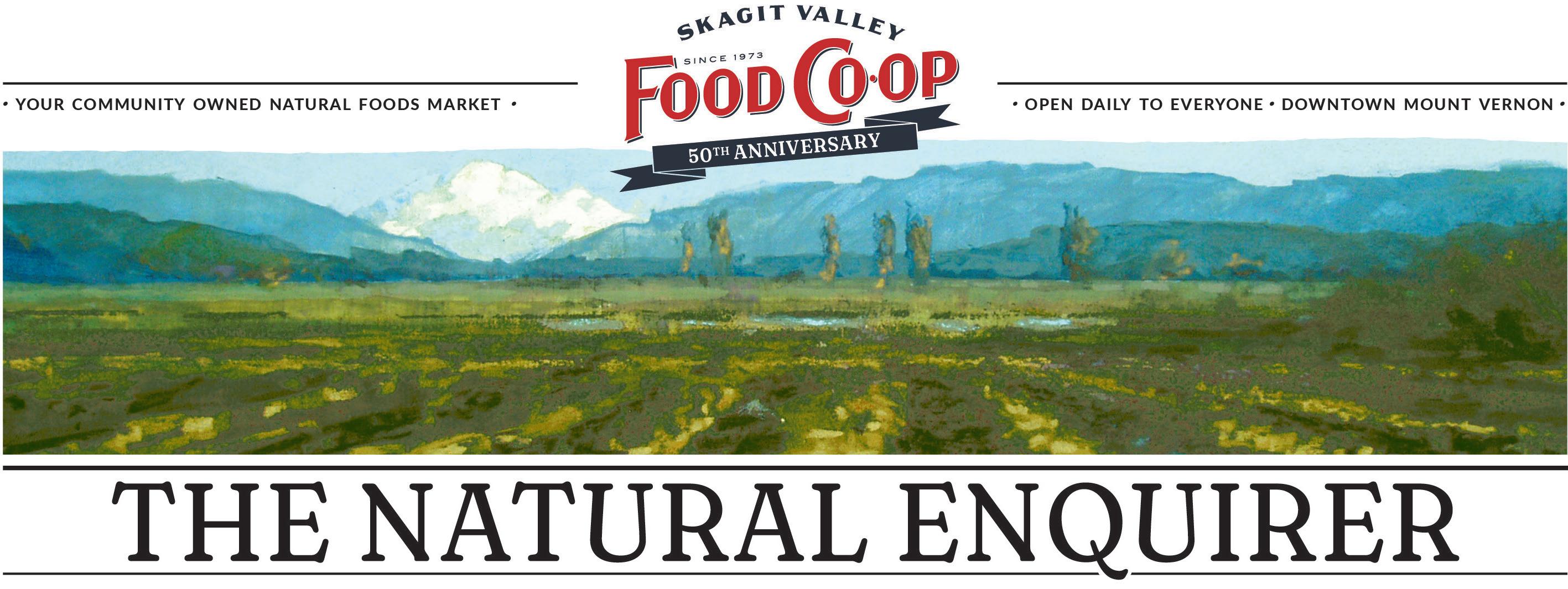
While not exactly a straight line, this scenario was played out all across the country, with over a thousand local food co-ops opening their doors by the early ‘70s.
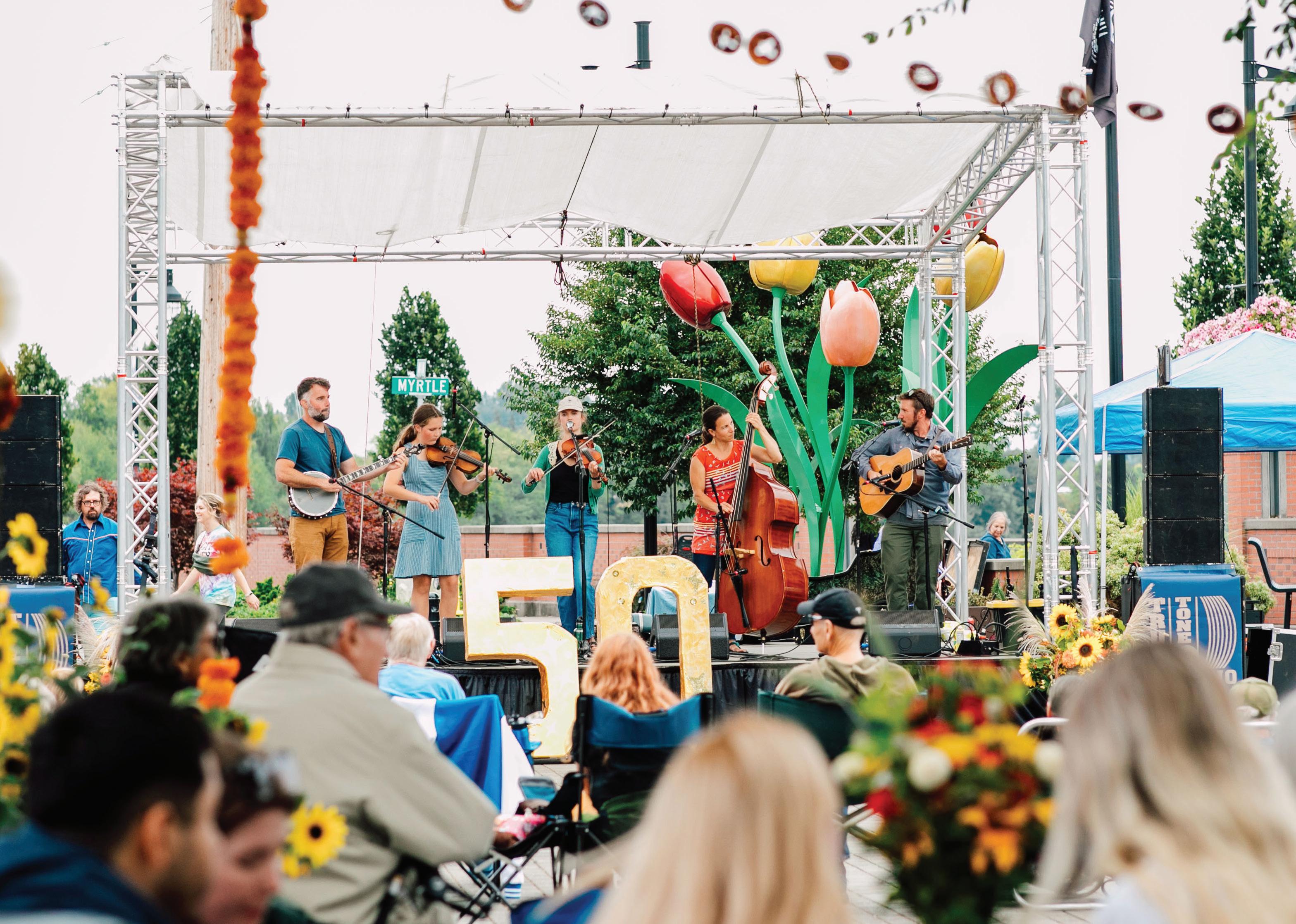
(continued on page 13)

Presorted Standard US POSTAGE PAID Mt. Vernon, WA Permit #34 ECRWSS POSTAL CUSTOMER
A PUBLICATION
OCTOBER—DECEMBER
Huckleberry Pie ∙ 9 A Solid Stock ∙ 6 A Cooperative Effort ∙ 5 IN THIS ISSUE: C-SQUARE Update ∙ 3 My Grammy’s Mac & Cheese ∙ 7 Brewer’s Yeast in Everything ∙ 8 Turkey Time ∙ 11 Lopez Island Vineyards ∙ 15
OF THE SKAGIT VALLEY FOOD CO-OP
2023
Katheryn Moran Photography
The Board Takes Flight
A brief summary of the conference from each attendee:
Tony White, General Manager:
CCMA was an annual occurrence when I worked on the East Coast. Attending in June was a first since 2014, and I was so happy to be there. Certainly, the opportunity to share the event with my four colleagues was great, but the biggest positive for me was embracing the spirit of Cooperative Principle 6, “Cooperation Among Cooperatives.” The amount of collaboration and knowledge sharing between hundreds of talented and dedicated cooperators was extremely powerful.
Tom Theisen, Board President:
Our Board has had numerous discussions about how we can continue to educate both new and long-term Board members alike. Whether it’s through Board retreats, online trainings through National Cooperative Grocers, or in person at conferences. The latter became a reality in June!

Over the long weekend of June 6th-8th, Board members Tom Theisen, Laura Bady, and Genaro Gomez, our Board Administrator Leigha Staffenhagen, and General Manager Tony White attended the Consumer Cooperative Management Association (CCMA) Conference in Sacramento, CA.
After arriving at the Sheraton Grand, the location of the conference, we were given the choice of three different tours. Our group chose to attend “From Soil to Seed to Plate” hosted by Sacramento Natural Foods Co-op and Pachamama Coffee Cooperative. The tour started with a trip into the foothills of the El Dorado Hills to the Pachamama Coffee Roastery. Pachamama is a cooperative of small-scale coffee farmers from Africa and Latin America
who have come together to roast and sell their coffee directly to consumers. The next stop was Soil Born Farms, located 13 miles east of the Sac Co-op, on the American River. Soil Born Farms is an urban farm, agriculture, and education project that empowers youth and adults to discover and participate in a local food system. It was great learning about and witnessing their work in regenerative agriculture. We finished our day with a tour of the Sacramento Natural Foods Co-op’s 16,000-square-foot store
Following the tours, we settled into our rooms and contemplated the two busy days ahead as Friday and Saturday sessions included several compelling topics and presentations.
Friday morning started with the first meeting of all participants which appeared to be over 400, representing co-ops across the country. Keynote speaker Errol Schweitzer’s presentation, “How Co-ops Can Adapt and Compete” is difficult to summarize, but it was informative, humorous, and left us with a positive yet challenging look into the future.
With so many sessions to choose from, it was tough to whittle it down. I ended up attending one on owner incentives, another on deli operations post-pandemic, and two related to co-op general managers (GMs). The first of the GM sessions focused on supporting them during these challenging times. We learned that being a GM has always been hard, but never as hard as it is right now. Current market conditions plus a tsunami of GM departures have left many co-ops feeling vulnerable in their leadership. But as boards, we have the power to stabilize and strengthen relationships with GMs right now, and by focusing on this key relationship, we can further stabilize and strengthen the co-op as a whole. We were guided through hands-on and small group work to learn new skills and tools to serve our GMs, and our co-ops, at a higher level.
Second, was how to prepare a co-op for a leadership transition, or rather: GM succession planning. This was somewhat eye opening in that recent estimates suggest that GM turnover has been 25% annually since the pandemic began. And while some of these are longplanned retirements, others have been unplanned exits. Your Co-op Board has already navigated its first-ever GM transition, but as we keep our eyes to the future, it was interesting to hear how other co-op leaders intend to prepare for such a shift, from deepening the bench to discussing the transition planning process.
Laura Bady, Board Member:
As a newly elected Board member, CCMA was a meaningful way to get to know our Board better; I like and respect them even more now!
The grocery business is ever-changing, and we need to continue to adapt and compete. It was inspiring to hear how cooperative farmers, grocers, and product purveyors throughout the country work together through financial assistance, business expertise, and other means to support thriving, sustainable local markets and the greater community. This shared focus keeps us competitive by developing the collective tools needed to keep our local communities’ health and welfare front and center.
Genaro Gomez, Staff Board Member:
One of my biggest takeaways was how much pride every person there took from being part of the co-op mission. It wasn’t just people that have worked in co-ops for a long time, people new to the co-op world were also excited to be part of what we are trying to accomplish. The amount of enthusiasm for new co-ops was exciting to see, as well. I was reminded of just how fortunate we are to have a co-op that has been alive and thriving for 50 years. It was an honor to go out and represent our co-op and community.
Leigha Staffenhagen, Board Administrator:
For me, the opportunity to connect with other cooperators and board administrators was a huge highlight. I love learning, so of course, attending a variety of workshops with topics ranging from marketing to community engagement to the history of co-ops was beneficial. And connecting with our own Board members outside of Skagit was also memorable.
Spending three days in the company of people from diverse backgrounds, life experiences, and rural/urban environments, bound together through the world of Cooperative Business Principles was a refreshing reminder that we have so much more in common than not, and that is a good thing.
SKAGIT VALLEY FOOD CO-OP MISSION STATEMENT
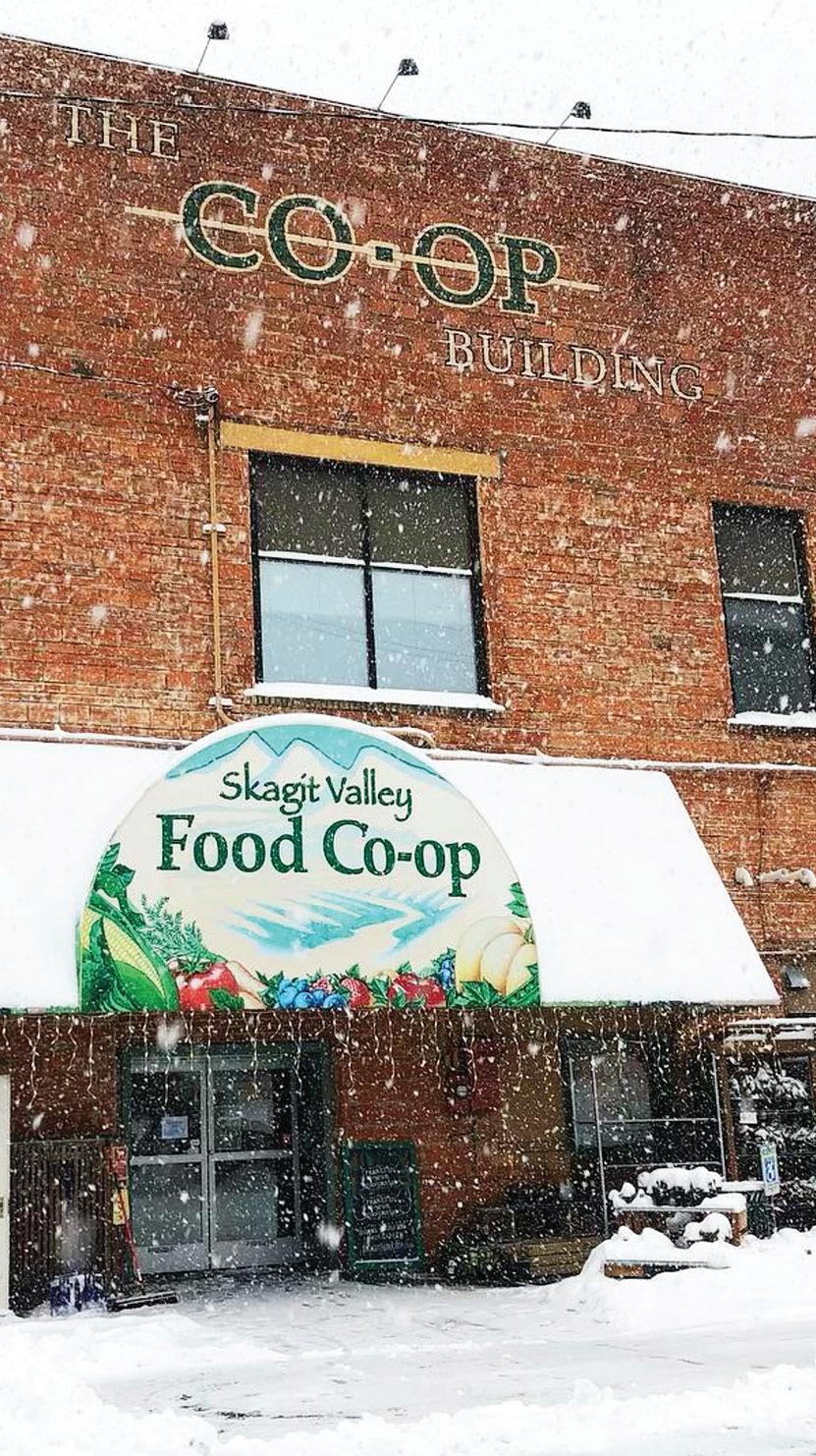
The Skagit Valley Food Co-op is a not-for-profit organization whose purpose is to provide good food at a fair price. As stated in the Co-op Bylaws: “The Co-op shall promote member welfare by utilizing their united funds and their united efforts for the purchase and distribution of commodities in accordance with the following criteria:
EDITOR | Nicole Vander Meulen
CONTRIBUTING
EDITOR | Leigha Staffenhagen
LAYOUT & DESIGN | Megan Young
STAFF CONTRIBUTORS | nancylee bouscher, Ben Goe
BOARD OF TRUSTEES | Tom Theisen, Brad Claypool, Kristen Ekstran, Laura Bady, Casey Schoenberger, Rob Smith, & Genaro Gomez
2 skagit valley food co-op the natural enquirer october–december 2023
FROM THE BOARD
The Natural Enquirer is a quarterly publication of the Skagit Valley Food Co-op. Opinions expressed are those of the writers and may not reflect Co-op policy. No articles are meant to be used for diagnosis or treatment of illness. The Co-op does not endorse the products or services of advertisers. Copyright 2023. Reprints with permission.
A. Maintaining the not-for-profit status of the Co-op; B. Offering high quality products which contribute to good nutrition; C. Supporting a low impact, non-harmful approach to the environment; D. Supporting local suppliers and producers; E. A commitment to building a cooperative economy and supporting others who share that commitment; F. A commitment to educational programs relevant to members and non-members in the community.”
Holiday Hours skagitfoodcoop.com Shop online anytime! 7am–9pm Daily 7am–5pm Christmas Eve + New Year’s Eve Closed Thanksgiving, Christmas & New Year’s Day Extended Curbside Service November 19–22 & December 17–23
Sacramento Natural Foods Co-op
C-SQUARE Update Growing Good: Viva Farms Report
Have you heard? C-SQUARE has a new name: the Makery!
The what? The Makery! Let us explain. When the Co-op purchased the C-SQUARE building from the County to expand customer parking, a decision needed to be made about what to do with the building itself, and a vision was born: create a destination for food adventure – a marketplace overflowing with amazing food, an option for people to get even more of what they loved from the Co-op. And so, C-SQUARE was named for the alliterative offerings it housed: a market, or square, with CRUST & CRUMBS (the bakery), Cuppa (the roastery), Cured (the butchery), and Cones (the creamery).
Foodies will recognize the names Tartine and Zingermann’s, businesses that provide a bevvy of products to eaters on the hunt for something exceptional. Tartine boasts a “manufactory” in San Francisco, Zingermann’s a bakehouse, cakehouse, makehouse (to name a few) in the Midwest. The Co-op has been doing the same since we opened the Deli Next Door, handcrafting hundreds of items right here. C-SQUARE was the endeavor to take your eating experience to the next level.
And while the storefront portion is now closed to the public, the behind-thescenes action is a beautiful display of how food should be made, and the idea remains the same: to provide you with even more food to enjoy. So what do you call a space that is home to so many culinary delights? Kitchen isn’t grand enough. Bakery leaves out other key functions, as do creamery and butchery. Which brings us to: Makery, an all-encompassing, whimsical, made-up word that’s a conversation starter. Just what are we making? Everything!
As of August 1st, all Co-op food production has been taking place in the Makery. What was once the Third Street Cafe restaurant space has been transformed into a state-of-the-art food production facility. Shortly after closing the restaurant in 2021, we made the decision to re-purpose the space in a manner that would benefit our core business, your beloved Food Co-op. (Did You Know? We were just voted Skagit’s Best Grocery Story – again!)
When C-SQUARE opened in 2016, the Co-op bakery items, smoked meats, pasta, ice cream, and pizzas were being made in the kitchen spaces that occupied the back half of the building. Now, the entire building is designed and dedicated to producing all Co-op made foods, including Deli food. Before the move, we were producing food in the C-SQUARE Building as well as two locations in the Co-op Building on the first and second floors. The Co-op Building work spaces had outgrown customer demand for fresh, high-quality food and could stand for some upgrades.

Speaking of upgrades, the process of revamping the space did not come without challenges. The pandemic impacted our opening timeline more often than not, especially when it came to ordering equipment. What was once available on-demand, was now backordered 6 weeks, 8 months, 1 year. That’s some slow moving, like molasses in winter.
Turns out, patience really is a virtue. All of the waiting is paying off. The Makery is bright, with ample light and climate controlled throughout. There are over twenty workstations, all designed for specific food production tasks in a way that’s efficient and ergonomic. The equipment we were waiting on? A steamer to quickly steam your favorite vegetables. Two tilt skillets, an innovative way to cook our soups and stews. Dual stack convection ovens and a new charbroiler for your sought-after grilled items. Two new large walk-in coolers, one medium temp and one freezer. Two high capacity blast chillers that allow us to chill hundreds of pounds of fresh cooked food down to food safe temperatures for packaging in under two hours. That food can then be packaged and stored if need be or sent directly to the Co-op– talk about fresh and local!
Another perk: staff is loving the new digs and the good vibes of working together under one roof. The unity is already evident behind-the-scenes and in product consistency. Best of all, we’re busy chipping away at the ultimate goal: giving you what you’ve asked for – a wider variety of delicious, nutritious food, made right, and made right here at the Makery.
To kick off the Co-op’s 50th Anniversary year we donated $100,000 to Viva Farms through the Co-op’s Growing Good Fund. As part of this partnership, Viva has provided a mid-year report (summarized below) and hosted two interactive tours at their Burlington site with Co-op members in July and September along with two private tours for Co-op staff. Over the course of the tours, members and staff had the chance to walk the farm, learn more about Viva’s transformational farm incubator programs, and how Viva works with its practicum students to give them the tools and skills, both on the farm and in the office, to succeed on their own piece of farmland.

Viva Farms Report Summary
2023 marks the 13th farming season of Viva supporting beginning farmers. This season, Viva has 33 farm businesses (55 farm owners) in the incubator program, including 9 new farms. All available farmable acreage of its 119-acre land base is being leased to beginning farmers for the 6th consecutive year. All the farmers in the program can sell though Viva Farms’ sales program which holds an umbrella certified organic certification; and Viva has also provided technical assistance to support eight farms to obtain their independent organic certifications, expanding direct sales market opportunities. Viva recently supported its second farm in obtaining their own Good Agricultural Practices (GAPs) certification.
Three incubating farms sell directly to the Co-op (Cabrera Farms, Silva Family Farm, and The Crows Farm), as well as two alumni farms, Boldly Grown Farm and Grass Becomes a Wave. The produce department also occasionally purchases from Viva’s sales program that aggregates produce from all incubating farmers. Anticipated farmer sales in 2023 are approximately $2 million. Five farms launched from the incubator this year, including Bumblebee Farm, Reconnecting Roots, Root & Rabbit Farm, Dear Table Farm, and Grass Becomes a Wave. And of course, alumni Amy Frye and Jacob Slosberg at Boldly Grown Farm are continuing to expand their production acreage and farmstand on the land they purchased in Bow in 2021. Each of these farms secured sustainable land tenure to grow their businesses; and they are thriving on their new land.
Viva continues to upgrade equipment and infrastructure, including the construction of a 7,500 square-foot AgPark Market Center that will improve incubating farmers’ ability to conduct post-harvest activities safely and efficiently. The Market Center will feature a GAP-certified wash/pack facility, extensive cold and dry storage, and accessible loading from the field and for distribution. It will also provide a learning environment for Viva Farms staff to provide hands-on technical assistance. The project is on track to be completed by Spring of 2024. Viva was recertified organic through Oregon Tilth for the 9th year in a row and renewed its Salmon Safe certification. Viva kicked off on-farm trials via the USDA Natural Resource Conservation Service in partnership with soil scientists, an agricultural economist, and the Immigrants and BIPOC in Agriculture program team at WSU to support eleven farmers in the incubator to trial a variety of conservation practices. Viva is also partnering with the University of Washington on a newly funded project, Blue Carbon, Green Fields, which will pilot a novel and mutually beneficial collaboration between aquatic farms and small-scale diversified crop farms in its incubator, focused on the removal and reconveyance of nuisance seaweed for application as a carbon sequestering soil amendment.
The Co-op and Viva will continue to share updates.
To learn more about Viva Farms, visit vivafarms.org.
Curbside is Moving
Our Curbside Grocery Pick-Up location is moving from C-SQUARE (The Makery) to the Co-op Building. Now, you’ll park in the last parking stall along the Ziply building. Look for the sign! If that space is occupied, please pull into the loading zone along the Co-op building, and we’ll bring your groceries right out. Questions? Call our Curbside Team at 360.540.9131!
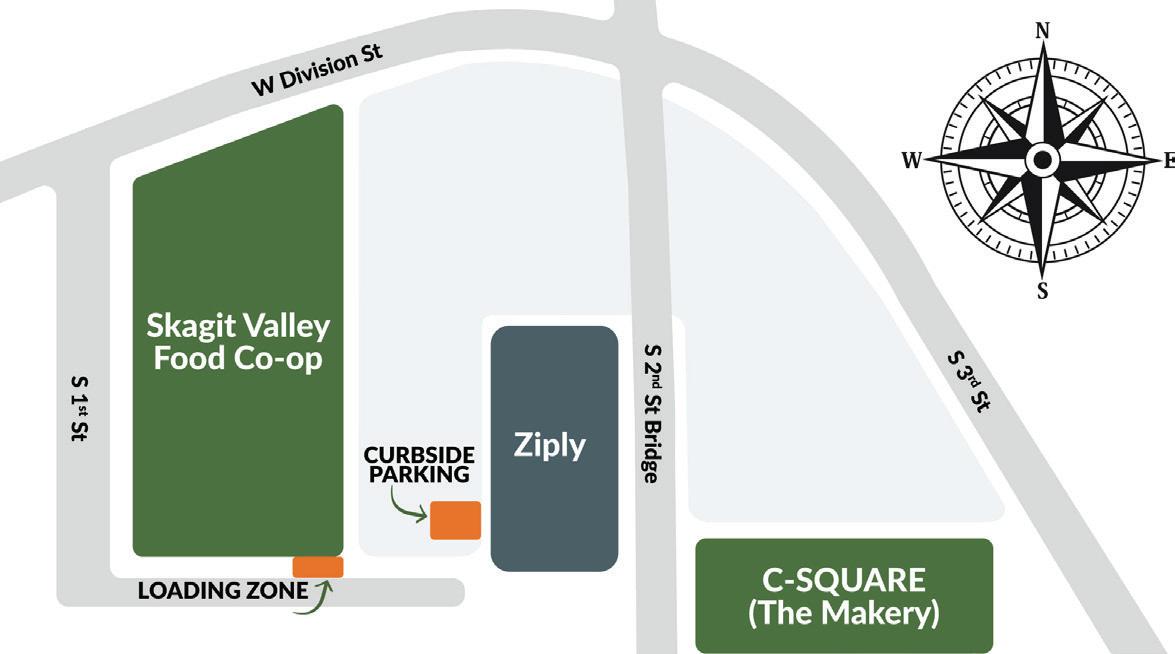
skagit valley food co-op the natural enquirer october–december 2023 3
Food production underway in the Makery
Co-op employees on a tour of Viva Farms.
x
Employee Art on the Mezz

Each month, we feature a local artist on our Deli Mezzanine, so you can enjoy delicious food and drink with a view. As you well know, the Co-op community is talented, spirited, and eclectic, especially when it comes to art, and the same is true for Co-op employees. There are so many hidden talents in this group! So, in celebration of local art and National Co-op Month, we’ll be featuring work from our very own creatives again this year! Be sure to head upstairs during October and get ready to be amazed by our beloved Co-op artists.

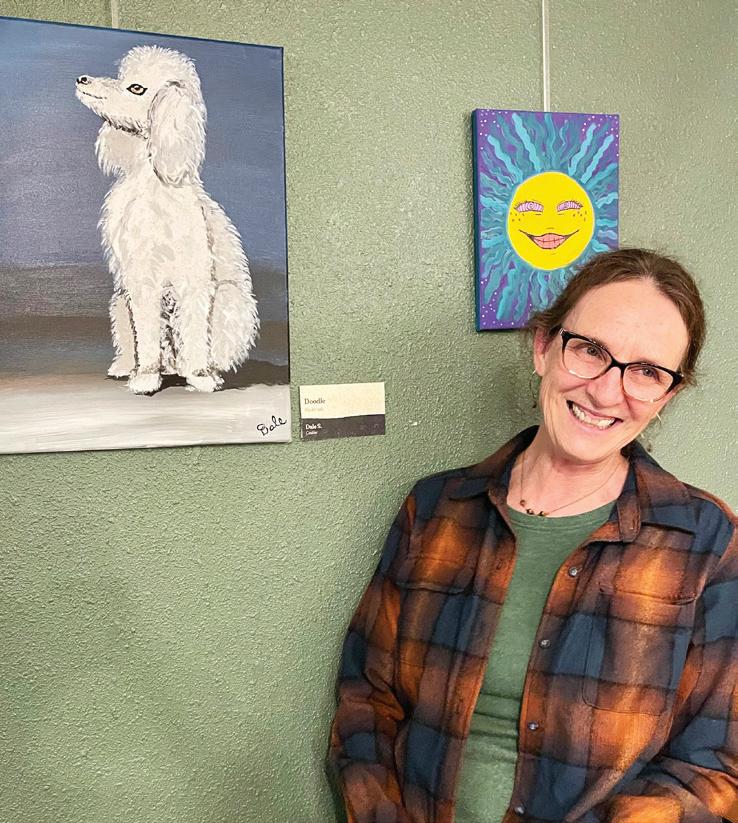
Editor’s Picks
by Nicole Vander Muelen
Fall just might be my favorite season. I blame it on the food. And time in the woods with my pups. Besides the seasonal staples like soup and squash, cider and fest biers, candles and candy, potatoes and pot roasts, here a few things I’m finding necessary these days.
Maple Cookies
CADIA
Forget road tripping to see fall foliage, fill your cookie jar with these for maple tree madness! Made with 100% pure maple syrup, rich maple crème is sandwiched between crisp maple wafers for un be-leaf-able fresh-tapped flavor.

Hot Hot Shot
THE CO-OP DELI
That’s not a typo – it’s our hot shot, but hot! With organic apples, lemons, ginger, and a dash of cayenne, the hot shot is already a pick-me-up, but order it hot for a warm, soothing sipper that’s energy-boosting, too.

Amaretto Cream Cake

THE CO-OP BAKERY
This is my dream cake. And it’s back! The end. But really, if you’re an almond paste or marzipan fan, you simply must.
Like all of our chilled cakes and cupcakes, it’s best to let them rest 5-10 minutes for the full flavor experience. You know, because they’re made with real ingredients, like buttah.

Soapy Tails Dog Shampoo + Conditioner Bars

SOAP CAULDRON
As many giggles as I get squirting a stripe of blue goo shampoo on my winter white dogs, the plastic bottles are no joke.

I’ve officially switched to Soapy Tails for a fluffy lather made with pure essential oils that’s safe for sensitive doggo skin and the planet, too

Meet the 4th Quarter Tokens for Tomorrow groups!
With Tokens for Tomorrow, every time you bring in a reusable shopping bag, we honor your commitment to reducing waste with a token worth 8¢ that you can give back to one of these local organizations:

Family Promise
The mission of Family Promise is to come together as a community to support homeless families as they work to provide loving homes for their children. Family Promise strives to meet the needs of homeless children and their family through their shelter, transitional housing, prevention and diversion programs through case management and the support of the community.
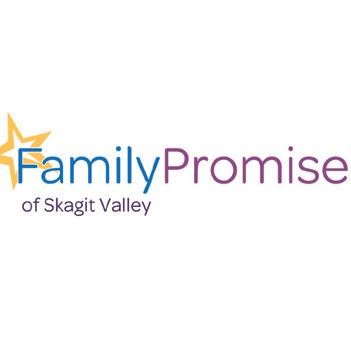

Friendship House
Friendship House believes that by treating all people with respect and kindness, they can help transform lives into those of self-sufficiency and abundance. They provide two clean and sober emergency shelters, one transitional house, one permanent low-income shared living house, a daily meal service, an innovative employment training program, and many other services to our house-less neighbors.

The Holding Space Birth & Wellness Cooperative



Founded by two female Navy veterans in 2021, The Holding Space focuses on the life transitions of women, providing an environment of awareness, compassion, and safety by offering affordable, comprehensive, and personalized support groups and health and wellness education to the community. HSBWC is governed by an all-volunteer Board of Directors and has an all-volunteer staff.
Welcome Home Skagit
The mission of Welcome Home Skagit is to create pathways to community living that remove barriers to housing stability throughout Skagit County. Their vision is to create a community free of homelessness through a five-part spectrum for transitioning those experiencing or facing homelessness to stable community living where no such system currently exists.
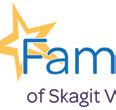

4 skagit valley food co-op the natural enquirer october–december 2023
Paintings by employees Dale, Eli, and Kelly.
A Cooperative Effort in Paradise by
in getting the town through a hard time. A portion of money donated came from people Wendy knew in the States.
Now, the non-profit SAS has taken on helping the local public school, in the heart of small Samara. Almost every one headed to the beach, passes by it daily—we see the children in their white shirts and dark pants or skirts playing on the cracked concrete of the courtyard—a battered ball and a hoop, but no swings or other equipment. As the restaurants have gotten shinier, and the beach chairs more abundant, the school has been left behind.
The school is entered into a lottery for funds from the Costa Rican government, but the very nature of a lottery means they may not be chosen, or may not be chosen for help for a long time—no guarantees with a system where the lottery has been described by SAS as a “waiting room with no resolution in sight.”

My partner and I have struggled to find small, nonintrusive, ways to contribute to the school. But, as outsiders, it is difficult to know what is effective, what is needed, and what is appropriate, so I was excited to learn that SAS, with permission of the Costa Rican Ministry of Education, is trying to address those needs. The needs are basic—the first SAS project is the outdated electrical system. I’ve seen the photos of the current wiring—they are worrisome.
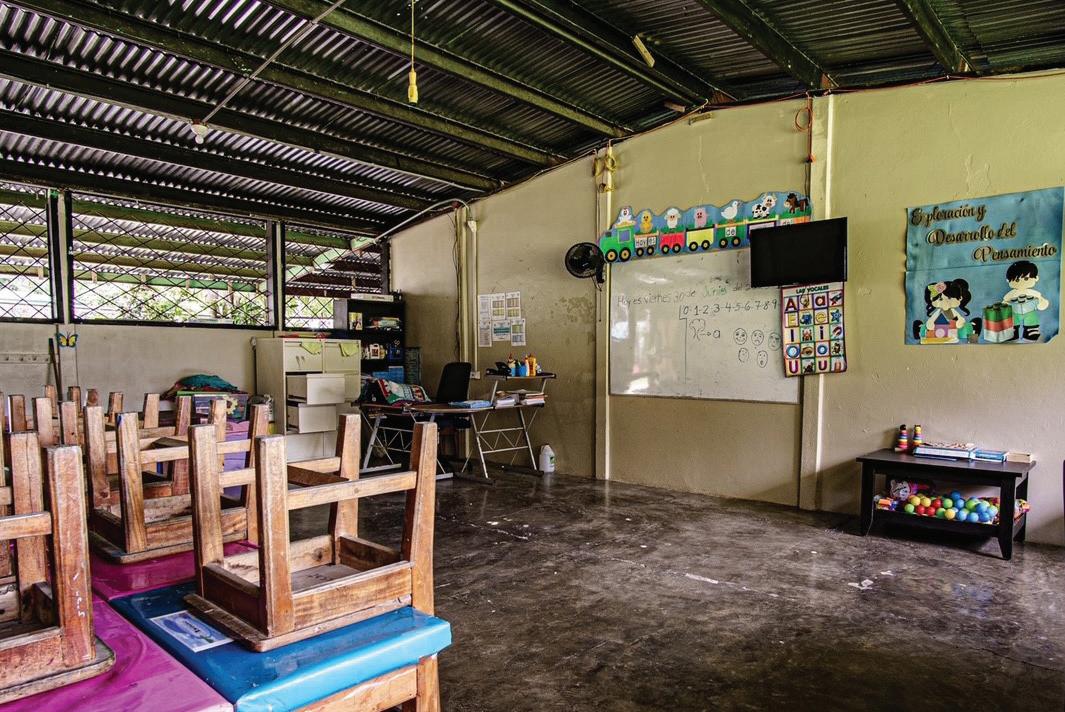
Before we went back to Costa Rica, I walked in my mind down the dirt roads into the heart of the small town of Samara. I walked past the wall of tiny orange blossoms, past the motorcycle repair shop where women sitting on a bench lean back against the wall, the young mother on her cell phone, the grandmother patting the baby’s back. I walked past Ahora Sí, past La Bohemia, past Cafe Maxou, past Mr. Pelican’s, past Colochos. I walked on the broken sidewalks, my eyes cast down for the ridges, the gaps. I heard the howler monkeys and the "buc-buc-bacoo" of the doves, and watched the children follow an iguana in the school yard.
Finally, I walked down the dirt alleyway, pocked with crab holes, lined with frayed green tarp woven through chain link fence, through the soft gray sand to the darker packed sand close to the waves, past pink shells like translucent rose petals, and the fishing pangas pulled up onto the beach, listing, paint peeling. I walked until I reached the Pacific.
When we do arrive, exactly a year since our last arrival, it is 9:30 at night, late for Samara, dark but warm—the warmth a sort of kindness. Ahora Sí, its bright blue walls painted with sprawling English aphorisms about peace, and love, and cats, is shuttered—piles of broken old wood where the hammocks swung. Lo Que Hay, with its tacos and its sparkly lights in the palms, its music and battered tables tilted on the sand, has closed down. Colochos has a new name—an incongruous Blue Malibu—and the tablecloths are now a smooth, deep cobalt. More than one vacant lot where people pitched empty coconut shells and monkeys ate mangos is now a construction site. Where last year police horses grazed across from the station, there is a parking lot, and a playground, and a public shower to rinse off sea sand. But the sidewalks are still broken, and walking in the dark, we can hear the waves breaking.
It’s been eight years since we first came to Samara, and since then we’ve missed only one annual trip— the year after the pandemic started. When we first came, the only chairs on the beach were scattered in front of low-slung beachfront bars and restaurants, and few people lounged on the beach at all. Everyone had a deep respect for the searing midday sun at nine degrees of latitude, for the restorative siesta. At least once a trip, the electricity went out for hours, and one year, we were told there would be no water available, in the whole town, the next day. Why we asked? But no one knew, they had just been told it would be so. We bought a big jug of water at the local Super, and the next day all the restaurants closed down.
Still, Samara was no longer a sleepy fishing village when I first visited it. People had come from all over the world and fallen in love with Samara, then schemed for a way to stay. They had opened Italian pasta places, French bakeries, Canadian-owned surf schools. They bought existing businesses, sometimes with nothing but a lease on the Costa Rican-owned land. But sometimes they bought the land as well. Even more people come to Samara these days, and many fall in love, and often they fall in love with what they see as opportunity.
Now chairs, tents, umbrellas, people stretch down the beach front. The noon hour is still slow, but if the tides are right, people are in the water all day long. The electricity is steady. The bathrooms in most restaurants are newly tiled and grouted, the sinks no
longer rimmed with orange rust. In the evenings, we jostle against others on the sidewalks—a parade to the sunset beach, and an exodus back again in the early evening equatorial darkness.
Before we even left home, I found myself wondering—do I belong in Samara? There are few places I know as well, few places where the texture of the land, of the uneven pavement, are so ingrained on my mind, in my heart. I wondered how you measure belonging, and I wondered if that measure matters. And I wondered too if my very question of belonging implies a desire for ownership. Is the desire to claim a place as somehow one’s own in itself a kind of accumulation, of consumption?
Can we simply belong in a place—have it be of grave and joyful import to us—without a semblance of possession?
I once saw a movie where the main character, having struggled with a ceaseless desire to have more, finally says to himself in wonder, “I can love the whole world without owning it.”
Bandaids, beer bottles, bits of battered boogie boards spattered on the beach—an alliterative scattering. One day we remember to take a bag with us for litter as we walk along the beach. We meet an entire crew of people doing the same thing. In truth, the beach is cleaner than it has been in the past, but small slices of plastic are still everywhere, and I can’t help but imagine them caught in the throats of sea creatures, tangled around bird wings, around turtle shells.
I have read that in some places, hermit crabs are raiding tin cans from rubbish heaps, skittering away in their clattering new homes, the shell housing inventory in short supply as tourists take them home. I’ve read that the crabs who contort themselves to fit into a can may never again fit comfortably in a shell.

Despite the pounding of hammers and the cicadalike whines of drilling, despite the stark white mini condos springing up in vacant lots, the most dramatic changes are down by the shore, where the waves have deeply hollowed out the sand in front of the Treehouse Inn, making a small canyon where tourists once sat on towels, watching the surfers. A deep gully has formed along one edge of the boardwalk, itself only a few years old. Like so many places, the ocean seems to be rising; perhaps the carbon footprint of thousands of tourists flying to Samara is carrying Samara off to sea.
Yet there is also a symbiotic relationship between tourists and residents in places like Samara, and one that would take a great cultural shift to reapportion. During the pandemic, when all tourist trade shut down, people were deeply hurting. And hungry. Wendy, a Costa Rican massage therapist, helped to start a foundation called Samara Ayudando Samara (SAS)—Samara Helping Samara—to collect food. They found single mothers were among the largest and most affected groups—and it is mothers I see every day, walking the beach, waiting at bus stops, dressed in the polo shirts and capris of hotel cleaners and restaurant servers. SAS was tremendously effective
I am grateful that the people of Samara have found a way to help the school, and grateful, that in their generous Costa Rican way, they have invited those of us who love this place, who hope to belong to this community, to join them. It makes me wonder about all those places that bring us joy—about how we might contribute to them in greater ways than by tipping well or even by being eco-conscious tourists. Imagine if, each time we were lucky enough to travel and become enchanted by a place, we found a way to contribute to some project or dream that the people of that place were pursuing? What a way to love the world, without trying to own it.
For more information about the SAS project to help the local school, and a way to contribute (if you have ever loved Samara, or perhaps a place like it), see: www.gofundme.com/f/samara-ayudando-samara-inspire-learning
skagit valley food co-op the natural enquirer october–december 2023 5
Bev Faxon
The local public school classroom in Samara
of the
A defunct fan, now a dove nest.
A view
school.
A Solid Stock
by nancylee bouscher
We all have constants in our lives – things we can count on. Some delightful, some horrid and many more that are somewhere in between those two extremes. Let’s call that Life Soup. Even though I may know some about your soup – the stock of it – you have secret ingredients, and so do I. The best part of life though is how we all gather up at this big long wooden table in the kitchen of existence, and we get to discover the shared ingredients. Sometimes it’s fun and quirky, like “Wow! I didn’t know you were born in Torrance, too!” and other times it’s bittersweet –knowing there’s another bright soul who shared a dark shadow that left its cool mark on both our hearts.
My family dining table is the same one I grew up eating on in Torrance, as a matter of fact. And the chairs are the same ones, too. They could all use a new finish after years of plants and projects, meals and mail, but it’s got solid legs. Four of ‘em! Chances are you have a similar table. It might be straight from IKEA or scored at a garage sale, but it’s got four legs that hold up your Life Soup. The Co-op’s table is old and sturdy too, with so much foundation holding us up.
The actual foundation of our store is mythical to me. From the “Knights of Pythius 1925” on the side of the north end of the building to the graffiti we paint over on the restroom walls, these bricks create this cozy crazy place. When I first came into the Co-op as a college student, the main door was that tiny one where we receive orders now, and the store didn’t yet expand down First Street like it does now, stretching into what used to be JC Penney’s. October 6, 1985, already 12 years old, is when we landed in this spot, and forty years later we bought both buildings that you explore when you come to shop, eat, and visit. So many voices have bounced off these walls. Yours included. My office sits on the third floor, and I look down onto First Street, the bridge, and the tops of the trees along the Skagit River. Some days I glimpse a coworker walking from the parking lot toward work, catch a clumsy puppy struggling through the new concepts of leashes and sidewalks, or watch excited kids skipping toward Tri-Dee and some new artistic adventure. Like a bird perched in a nest, I watch this sweet little town live its life around and in this crunchy food co-op.
I’ll never stop saying: we all come into this big old building for the food. And I know that you know it, but it bears repeating: we get food from farmers. Imagine the thousands of hands that have helped to plant, tend, and pick every ingredient, not just for your meals, but also in your medicine. In July, I got to live out a long-time dream by driving down to Williams, Oregon to meet some of the farmers of Herb Pharm. If you’ve ever strolled into Wellness you’ve seen the classic goldenrod yellow labels on all those one-ounce bottles of herbal liquid extracts waiting to welcome and overwhelm you in one fell swoop.
There’s so much to share about the visit there that it would take this whole edition of the newsletter. The magic white spiraling spray of Black Cohosh in bloom – how what I smelled as sweetly euphoric floral can

turn into something dank in another’s nose – the alien space ships of passionflowers hovering on their vines as bees land and dance in the pollen, and the kind people that care for these plants. If you have ever met an Herb Nerd (I really want to type “Herb Nerb” because look how cute that is), then you understand this basic fact about them: they’d pick plants over you any day. Herb Pharm is full of Herb Nerds, Matthew and Mark being the two main ones we met, digging up chunks of soil for us to smell or having us blindly test a tincture and then “wander around” to see what we could glean from it (my favorite way to meet an herb). I get so much comfort from meeting the people who grow the medicine we offer.
I wonder how many thousands of types of plants live in the bottles and tubes of Wellness? It’s an impossible trivia question to answer, but for sure, one family that dominates would be the mint family. Google says a lot about this family, and you probably have plenty of personal experience, too. It’s in our tea and our toothpaste. There are so many more square-stemmed wonders, including lemon balm – she’s taking over my yard as I type – and another more subtle queen, Wood Betony. Plant her at your doorstep to offer protection, they say, or take a few drops when your head aches from being in the clouds. She is one of the many powers that make up Herb Pharm’s Daily Calming Spray, a secret super power to pocket for those moments when Life Soup gets too much. Or you can order her straight up, just might be your new favorite plant ally.
The place, the farmer, the plants, and you; those are the Co-op’s foundational table legs. But as the infamous caterpillar once asked Alice, “Who are youuuuu?” It’s true that cooperators sometimes get labeled with certain adjectives, but those of us who have worked here a while know that we are a varied
FAIR TRADE
Like a single vote, a single Fair-Trade purchase has the power to change lives. October is Fair Trade month, and we’re highlighting goods that make a difference.
Socks | MAGGIE'S ORGANICS
Almost nothing feels better than comfy-cozy toesies when it’s chilly outside. Put your foot in something soft, warm, fashionable, and functional. Maggie’s socks are Real Fair Trade and made from organic cotton.
Organic Beeswax Lip Balm | ZAMBEEZI
A tiny tube of organic, fair trade lip balm connecting you to the culture and community of Zambia, including its beekeepers. It takes all of us to keep the hive alive. Choose from honeybalm, sweet basil, wild rose, lemongrass, and tangerine.
Herbal Supplements | ORGANIC INDIA
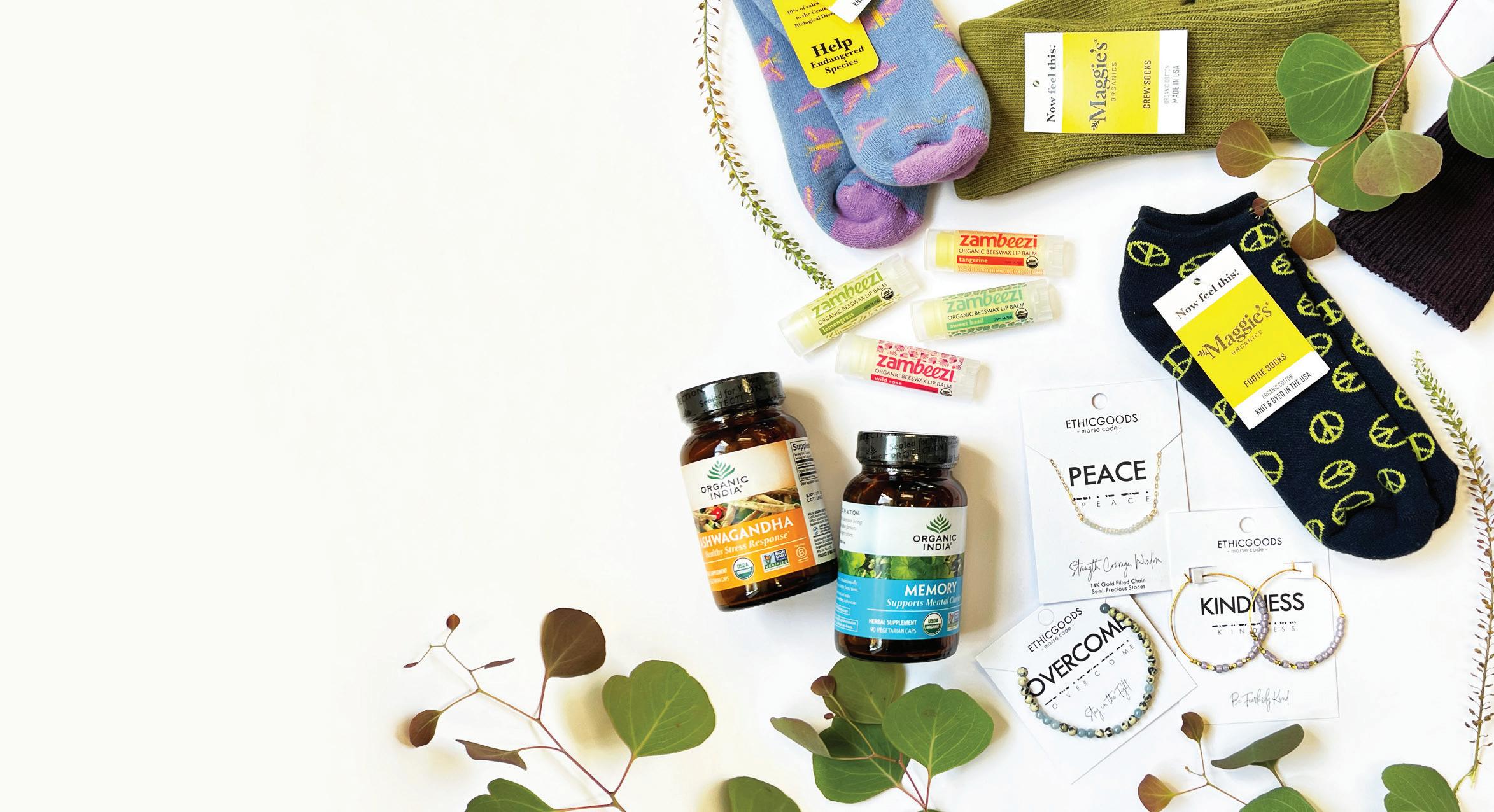
Your wellness, their livelihood. Organic India’s vision has resulted in the economic and cultural revitalization of rural farm communities, with over 3,000 farm partnerships, along with health care, education, and inclusive social change for women.

Morse Code Bracelets | ETHICGOODS
Every piece of jewelry has a story, and each word has meaning. What’s yours? Peace. Kindness. Overcome. Or something else? Whatever your word, your purchase provides dignified employment for survivors of trafficking and exploitation in Southeast Asia.
bunch of folks. While you can always be sure to run into a few pairs of Birkenstocks, we’ve also got steeled-toe work boots crusty with the job site, neon runners with bouncy marshmallow soles, and the clickity-clack of high heels with pointy toes trekking over our sales floor. Every customer is part of our Soup, and we like having it be a wild mess of different flavors. More importantly, it is my hope – and I dare say, the hope of most every other Co-op employee –that every customer sees part of themselves in our staff and on our shelves.
I want you to find a shampoo that works for your coils, and I want your neighbor to find something for her straight-as-a-board bob, too. Chances are it’s not the same shampoo. I want you to find that secret ingredient your great grandmother used in her holiday recipes, no matter the holiday, and I want you to find the thing you cannot pronounce, have never tried, and aren’t even sure what to do with. What matters is that when you walk through those fancy double doors you feel seen and welcomed as part of our community. Because you are, wholeheartedly. Skagit County will continue to grow, and we all get to decide what thrives here by how we treat each other. We all get to build the table bigger and add more chairs. We get to slurp soup and share stories, knowing that people and plants make our lives so succulent. See, there’s a lot in your Life Soup that you didn’t choose to put in there, but every day you add some more of what you want until the ratio is just right. We all know that any flavor can be overcome with another, and that is one constant that will never change. Soup’s on, my friend!
6 skagit valley food co-op the natural enquirer october–december 2023
FROM WELLNESS
1 1 2 3 4 2 3 4
Some of Herb Pharm’s herb nerbs, Matthew and Mark
My Grammy’s Mac and Cheese
My Grammy is not your average grandma. She doesn’t enjoy knitting. I’ve never seen her carry a purse. I grew up going to her soccer games, where she was an aggressive competitor, until a hole on the field ended her career early at the ripe young age of 52 with a broken leg. And yes, she had no interest in getting medical attention (and also yes, we made her). And. I’ll never forget how inspired I was when she attended college for the very first time at 50, proving to me (but mostly herself) that you can always go back to school, learn more, and reinvent yourself.
While she doesn’t do a whole lot of cooking and usually opts to go the store-bought route for our holiday pies, she does have one recipe that’s always the first to become an empty casserole dish of crunchy remnants: her famous mac and cheese.
When our Editor Nicole asked us to focus on food traditions, no other food came to mind for me. We’re what you might call a typical meat and potatoes family. And I mean literally. I come from a family of 8, and when you’re coordinating sports practices and school schedules and a dad who works night shift, the easiest thing is to pull out some chicken and frozen taters, toss ‘em on a sheet pan and call it dinner.
Nowadays, thanks to the Co-op, and a partner with an adventurous palate, I no longer consider myself a picky eater like I did when I was a kid. But back then, mac and cheese was always a favorite, a comfort
by Leigha Staffenhagen
food, one that transcends its three simple ingredients and reminds me of home, a safe and loving space. It was the meal I asked my mom to make when I was home from college. It was the meal we were all excited for when we asked “what’s for dinner?” It’s been a constant in my family’s history, offering a scoop of comfort during stressful familial situations, challenging medical diagnoses, and whatever else life thought was fair to throw at my parents.
To me, my Grammy’s Mac and Cheese is just that, hers. But it isn’t. As with many family recipes, learning how to make the family mac and cheese is something that’s been passed down for decades.
The recipe actually belongs to my great grandma, my Grammy’s mom. But according to my Grammy, her mom would make it with cubed cheese as opposed to shredded. A very minor, insignificant difference, perhaps, but to me, completely sacrilegious. My mom learned how to make it from her grandma when she was just 10 (!!!). And after some significant Facebook research, I was able to pinpoint the day I successfully made it on my own as July 21st, 2014. My mom’s post that day? “The torch has been passed, my grandma would be proud. Leigha now can successfully make our special family homemade mac and cheese. Good job honey.” I look forward to the day that I too can teach my kids, and maybe even grandkids, how to make their great Grammy’s mac and cheese.
High Five Recipes to Fall in Love With
by Leigha Staffenhagen
OMG BLT
Cheap. Easy. Freakin’ delish. If you’re not making BLTs when you want lunch in a jiffy, what’re you waiting for? While the holidays often require lots of prep and hours attached at the hip to the stove, a good ol’ BLT is a delicious break from the kitchen. On the go and don’t have time to prep? Pop by the Co-op Deli sandwich kiosks and we’ll make you a fresh one, any time of day!
· 4 slices of Co-op bread – Choose from our Sourdough, Potato, or Multi-Grain
6 slices of thick-cut bacon
1 tomato, sliced
4 leaves of lettuce - iceberg, bibb, or Romaine Pantry Ingredients: mayo, salt & pepper
1. Prep the veg— slice the tomato lengthwise and add a couple cracks of salt and pepper. Wash and thoroughly dry your lettuce leaves.
2. Cook the bacon— heat a skillet over medium heat. Add the bacon, cooking to your desired level of crispiness. For us, extra crispy is best, to balance out the soft bread, crunchy lettuce, and firm tomatoes.

3. Remove the bacon from the pan to a paper towel-lined plate. Gently pat both sides of each slice of bread in the bacon grease. Broil your bread in the oven until toasty.
4. Assemble your sandwich! Spread some mayo on the bread, add the tomato, followed by bacon and finish it off with lettuce. Slice in half, pair it with a cup of Co-op soup, and call it dinner!
Fun Swaps!
We love a classic BLT, but there are so many yummy swaps to make a BLT your own. Want plant based? Swap out the bacon for thin-sliced tempeh or vegan-friendly strips. No gluten? No Problem! Swap the bread for your favorite GF option. Sad to see no cheese? Pile it on! Need a kick of spice? Slather on some Wildbrine Kimchi Sriracha sauce or Chipotle Bitchin’ Sauce.
So, here’s to my Grammy, and all your grammies, grandmas, nanas, and special gals in your life. May their recipes continue in your kitchen for many years to come, and may you, if you’re lucky enough to get the recipe, continue to share the legacy for many years to come.
But until it’s time for the torch to be passed, I’ll be calling my Grammy to make sure there’s plenty of her famous mac and cheese at Thanksgiving and Christmas Eve this winter. (p.s. love you, grammy )

Prepping, cooking, and serving food can be a lot, especially as the holidays get closer. Lots of planning, lots of ingredients, and likely more than one (or two) trips to the Co-op.
If you want to slow down and just focus on simple, delicious meals look no further than our High Five recipes, all made with five main ingredients (or less!).
Slow Cooker Carnitas
While authentic pork carnitas are made with lard and evaporated milk, this quick and easy take on the traditional dish is very tasty in its own right. Enjoy it for taco night, or toss with your favorite BBQ sauce and serve on the Co-op’s potato rolls for a flavorful take on pork sliders at your next football watch party. No shame if you eat the crispy bits directly from the pan.... I sure do.
· 2-3 lb boneless pork shoulder
· 1 white or yellow onion, roughly chopped 2 oranges
5-7 pickled jalapeño slices (more or less depending on your taste for spice!)
· 4 cloves of garlic, minced Pantry Ingredients: salt, pepper, cumin, oregano, olive oil.
1. Pat dry the pork shoulder and season liberally with salt and pepper.
2. Make a rub by combining 1 tbsp olive oil, 2 tbsp oregano, and 1 tbsp ground cumin. Once well combined, rub all over the pork.
3. Add the pork shoulder to a slow cooker with fat cap side up. Top with the onion, jalapeño, garlic, and the juice of two oranges. Feel free to add fresh lime juice too – I always do!
4. Cover. Slow cook for 10 hours on low, or 6 hours on high. As with pulled pork, you’ll know the meat is done when it shreds easily. Remove pork from the slow cooker and let it cool slightly before shredding with two forks.
5. Crisp up the carnitas— Heat a large skillet over medium-high heat. Once hot, use tongs to add some of the carnitas to the pan. Add a a scoop of the reserved liquid from the slow cooker. Cook the carnitas in the liquid until the majority of it has cooked off. Flip the meat and crisp on the other side. Repeat until all of the carnitas have been crisped.
6. Serve with tortillas, cotija cheese, avocado, and pico de gallo.

Puff Pastry Apple Tarts

Flaky, sweet, fruity, and best of all, super easy to make. If you have a hankering for an apple pie but don’t want to deal with making a crust, let someone else do the work for you! While puff pastry can be made from scratch, frozen puff pastry is convenient and gives you the same buttery flakiness you love about pie. Or, if you don’t want to use apples, sub in any of your favorite stone fruits! Co-op fresh cranberry relish would also be divine.
· 1 sheet frozen puff pastry
· 2 medium apples, cored and halved, sliced thin
· 1/4 cup brown sugar
· 2 tbsp butter, softened
· 1 tsp vanilla extract
1. Preheat oven to 400°F. Unfold the puff pastry and cut into 6 equal rectangular pieces. Allow to defrost at room temperature.
2. While the puff pastry defrosts, combine sliced apples, brown sugar, and vanilla extract. Toss until well combined.
3. Once defrosted, place puff pastry pieces on a parchment paper-lined sheet pan, and spread a thin layer of butter across each.
4. Add sliced apples and gently fold in the edges of each puff pastry tart to seal.
5. Bake for 15–20 minutes, or until the pastry is puffed and golden.
6. Serve warm with a scoop of Co-op ice cream.
skagit valley food co-op the natural enquirer october–december 2023 7
Grammy and Leigha on Christmas Eve
Brewer’s Yeast in Everything
by Ben Goe
I’ve been going to food co-ops since before I can remember. In the ‘80s, my parents belonged to a buyer’s co-op in Memphis, much like the church basement beginning of our store. A group of families splitting up sacks of rice, beans, flour, and oats. There was also a health food store that provided tamari, tofu, carob, Barbara’s Cheese Puffs, and Tiger’s Milk bars. And brewer’s yeast was a pantry staple for us. I probably didn’t eat popcorn without brewer’s yeast on it until I was 12. There was brewer’s yeast in the macaroni and cheese, and in the tofu sloppy joes that my mom made. A popular breakfast in our house was toast with butter and brewer’s yeast on it, and when we had soft boiled eggs they were accompanied by toast strips with brewer’s yeast.

When we moved to Washington in 1989, landing north of Bellingham, one of the first things my parents did was join the Community Food Co-op. At that time, it was located next to Dream-On Futon, in the building where Boundary Bay Brewery is now. It was a funky place. The whole store went downhill from the entry. There was a short stairway and ramp halfway through the store down to the other half. Miso-Cup, tempeh, bulk Sundrops, and trail mix. Rice, beans, flour, brewer’s yeast, and oats. Inexplicably, there was also a frozen yogurt machine, selfserve and by-the-pound.
We moved south to Bow-Edison in the early ‘90s, and the Skagit Valley Food Co-op became our home store. The entrance at that time was on the northeast corner of the building, where the delivery doors are now. Just inside and to the right was a playhouse on stilts, with a ladder on the side and a slide down the front. There were boxes of children’s books and toys inside. Produce was pretty much where it is now, but it was a much smaller store then in all ways. The entire store occupied the space from the north side of the building to the wall where the bathroom near the registers is now. For a very long time there were only two cash registers, just inside the door and past the playhouse. Friday nights in the deli was all you can eat spaghetti and garlic bread. And yes, there was also a selfserve frozen yogurt machine.
I started working at the Co-op when I was 19 years old. I had worked in kitchens before that, and I knew I was passionate about food but not
Taylor’s Gold Comice Pears
the restaurant industry. It is still the case today, that in most kitchens the best you can hope for is to be the chef. Typically, a salaried position, chefs often work 80 hours a week, and receive few, if any, benefits like insurance or retirement. That wasn’t for me.
I was hired on here as a cashier but quickly transitioned to produce. When the produce manager left shortly thereafter, I wrote a letter of intent, and Todd Wood, the general manager of many years, took a chance on letting someone so young manage the department. I’ve had many experiences that I treasure in the two decades plus since then. I have friends so close I consider them family. I even met my wife while working at the Co-op, back in 2005. I’ve been able to get to know and work with dozens of amazing farms and farmers— locally, regionally, nationally, and internationally. I’m able to share my knowledge and passion for high quality natural foods, and have the opportunity to keep learning myself. Most importantly, I feel like I am providing a valuable service and resource to customers and to the local sustainable agricultural community with the work that I do, and that our work matters and helps people. And, I get to have a great source for organic produce, rice, beans, flour, oats, and, of course, brewer’s yeast for my kids’ popcorn.
Community Action’s Skagit Food Distribution Center
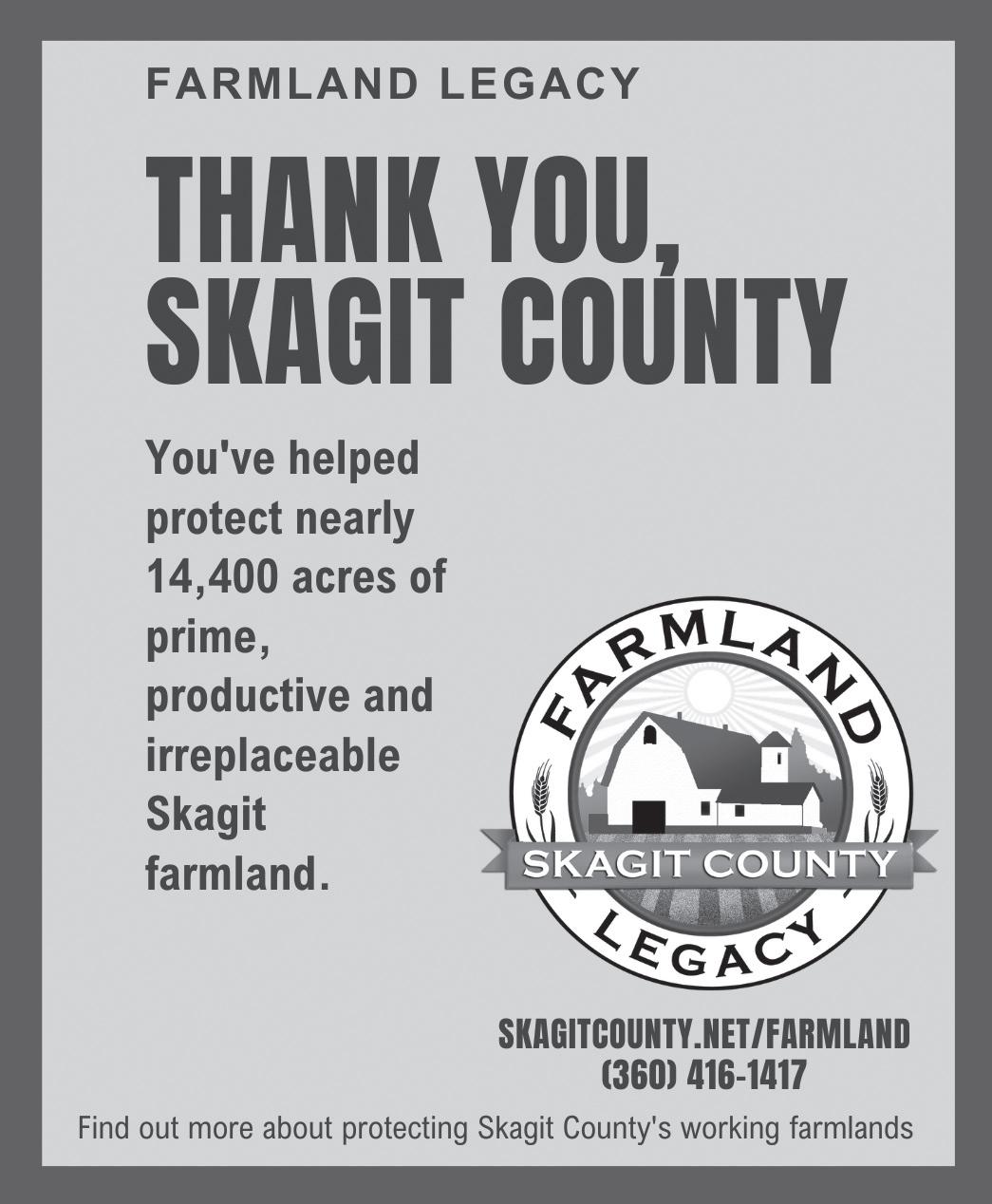
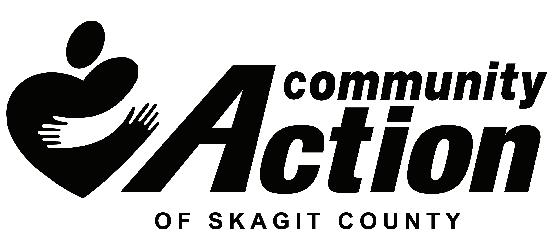

Provides
70-80% of food available through ALL 11 local food banks.
Learn more:

CommunityActionSkagit.org/ Skagit-Food-Distribution-Center
Gary and Sue Moulton have about 350 pear trees in Bow, and we bought their entire crop of Taylor’s Gold Comice pears again this year. They’re Produce Ben’s favorite pear in the whole wide world, and Gary describes them like biting into a juicy pear-flavored butter. Taylor’s Gold is a russeted, thick skinned pear (that we recommend peeling) with the sweetest, most buttery flesh imaginable. Check ripeness by pressing lightly on the flesh around the stem; it should be as soft as a ripe peach. They're sure to sell out quickly so get them while you can!
In-Season Produce
Savoy, red, green + Napa cabbage red, green + Lacinato kale
frisee, escarole, collard greens
assorted varieties of radicchio
Kabocha, Delicata + Baby Blue
Hubbard squash
Winter Luxury pie pumpkins
BOLDLY GROWN FARM
Honeycrisp, Granny Smith, Fuji, Pinova, Cosmic Crisp, Ambrosia + Gala apples red + green D’anjou pears
BROWNFIELD ORCHARDS

apple ciders
MOUNTAIN FARM +
SAUK
CEDARDALE ORCHARDS (NOT ORGANIC)
herbs, fennel, cabbage
heirloom tomatoes
caulifl ower, broccoli
THE CROWS FARM
baby arugula, sweet peppers, chard
baby kale mix, spicy greens mix
assorted winter squash
LONG HEARING FARM
assorted eggplant + melons, pluots, Seckel pears, Golden Delicious apples
EDIBLE ACRES
sunfl ower sprouts, tomatillos
Italian eggplant, French grey shallots, kohlrabi, Brussels sprouts
Galeux de Eysines, Marina di Chioggia, Black Futsu, Jarrahdale + spaghetti squash
MOONDANCE FARM
bunched carrots + beets, green cabbage, red + green dandelion greens
juicing carrots, leeks, parsnips, radicchio
bulk carrots, red & gold beets
HEDLIN FAMILY FARMS
salad mix, bunched beets, daikon radish, kale, purple cabbage, green tomatoes
Grey Ghost Kabocha, red Kabocha
acorn + mini spaghetti squash sugar pie pumpkins
WELL FED FARM
Russet, purple, yellow, red potatoes
Amarosa fingerling potatoes, shallots red, yellow + Cippolini onions
HEDLIN FAMILY FARMS
8 skagit valley food co-op the natural enquirer october–december 2023
FROM
A favorite photo of Ben
PRODUCE
Farmer Gary Moulton, and grandson, Bridger
Adventures of Huckleberry Pie: One Family’s Odyssey
by Sarah Stoner
The 120-year tradition of huckleberry pie in our family cannot be told without the story of how my mother’s family came to spend every long summer in the Selkirk Mountain range of Idaho, where the purple berries grow wild—and only in the wild. But first, let’s first establish some important truths in our family, about pie and huck pies. You may or may not agree. However, please know:


1. The only real huckleberries are purple. Do not directly state or imply in the company of any family member that the red variation is a huckleberry. Lips will be pursed, looks will be given. It’s definitely not up for discussion.
2. Thou shalt not add cinnamon to a huckleberry pie. Also, not up for discussion.
3. Thou shalt not add cornstarch or gelatin to any pie. A pie with cornstarch is a pie to be pitied, not a pie to be consumed. A pie with cornstarch—perhaps sitting behind glass in a restaurant—will be eyed with sadness. Only a few words will be said, in hushed tones of mourning.
4. Whatever amount of sugar the berry pie recipe calls for, thou shalt cut it in half. Tartness is part of the experience. The same cornstarch rule applies (Pity. Such a shame the pie was ruined) to an overly-sweet berry pie.
5. If you are a newcomer to the family, or if you’ve been around for a while but are now old enough to have earned your own bucket, your berry picking will be assessed. You will be pronounced a “clean-picker” (no leaves or twigs in your bucket) or a “dirty-picker.” Either one is fine, with maybe a twinge of leaning towards no-twigs in the berry bucket.
My great-grandfather Joseph was a botany professor at Eastern Washington University, back in the early 1900s when it was known as Cheney Normal School. A botanist uncle of his had specialized in the flora of the Selkirk Mountains surrounding Priest Lake, so he knew of the remote area from his uncle. The top of this 25-mile-long lake sits a few miles from the Canadian border as the crow flies, and was home to the last remaining herd of North American woodland caribou… that’s right, our venerable fuzzy-horned reindeer. When does the berry picking come in, you are wondering.
Joseph, who everyone called Chief after a trip to South America, travelled to the base of Priest Lake each summer. Married in 1903, he’d load up a canoe with a summer’s worth of supplies along with his wife Nona and five kids, the top of the canoe close to level with the water. They’d paddle the three-day journey to the top of the lake. Camp would be set up for the summer, while my greatgrandpa did his studies. Buckets of glacier-cold spring water would be filled and sloshed down the path to camp, deer would be hunted, trout would be plucked from the lake, and huckleberries would stain fingers purple while they were eaten off the bush or gathered for pie.
My mother’s grandmother Nona, short for Wynona, was a strong outspoken woman in her day, though gender roles were set in gelatin those days, baked into daily expectations. And so, the grand tradition of huckleberry pie began with my great-grandmother. It continued with my grandfather John who was the pie maker in the family, an early maverick in gender role bending. My father loves cooking but it’s my mother who makes a mean crust—steady perfection. What varies within a huck pie are the berries—some nights, the juice floods over the crust, caramelizes on the dish; other nights, the berries sit thick and still. The one constant: delicious! Huckleberry pie is the only instance when it’s okay to lick the plate.
This year, 120 years and five generations later, our youngest generation— that of my kids and their cousins, now in their teens—took on the pie making tradition. No one asked them to, but the adventure began on a summer hike when the five of them—youngest cousins—bolted ahead like colts the minute we piled out of the cars at the trailhead. The middle generation (me) and elder generation (my mother, her cousin Dan) were surprised to catch up with them on the trail… we came upon the teen gaggle stopped off the trail—stooped— plucking deep purple huckleberries that lined the dusty path to Two Mouth Creek. Not every year is a “berry year.” The kids know this. Gen 5 was busy, focused, excited.
The five of them buzzed with cooperation. Someone sacrificed their brown paper lunch sack. Everyone picked into the bag. No one ate any. The task at hand: collect enough for a pie. They consulted the elders on the path, solemnly offered forth the paper sack for assessment. “How much more?” My mom and her cousin and I weighed in. About a cup more.
The kids took turns carrying the loot up to the creek where three generations ate lunch in the shade, then returned camp. James and Liam dashed off to make the pie. My baker daughter apparently had some swimming to do. The boys had been discussing their pie-making plans the whole way down the trail anyhow.
The kids decided—pie for breakfast.

Huck pie used to be exclusive to summers for the first generations of our huckpicking pie-making family. The rough-hewn cedar trunk cabin built by Chief and his five sons had no electricity, no running water. Four generations later, I spent childhood summers in the cool cabin, listening to the Old Majestic wood stove fire up in the morning for the grownup’s coffee. The ice box was just that… a latched porcelain box with a door that opened to the front like a fridge.
These years, we freeze some of our fresh berries, haul them home in freezerchests of purple gold bounty. Fall birthdays and winter holiday plans now include the question, “How about I make a pie?” No one asks what kind of pie. It will be huckleberry, the berries will have been handpicked with love, and they will sing of the generations of purple-stained fingers, of summers spent in high-alpine forest next to a cold clear lake, for the last century and maybe for centuries to come. With not a cornstarch box in sight.
skagit valley food co-op the natural enquirer october–december 2023 9
Sarah Stoner grew up in Uganda, Morocco, Belgium, and Thailand and spent part of her summers hauling spring water and picking berries in the Selkirk Mountains of Idaho. Sarah lived in the U.S for the first time at age 18. She returns each summer to Idaho with her family. sarahjstoner@hotmail.com
You Shop, We Give 4%
Every time you shop at the Co-op, you help support our local economy and community. 4% Friday is another easy way to do your weekly shopping and contribute to organizations you care about. You shop, and together we give 4% of the Co-op's sales on the 4th Friday of each month to a non-profit community organization.
OCT
New Earth Recovery

New Earth Recovery offers safe, high-accountability, and substance-free housing for women and men who want to maintain their sobriety and find healing from wounds that have contributed to cycles of addiction. New Earth Recovery offers a long-term, holistic, structured residential recovery program, providing close staff accompaniment, life skills, a new community, therapeutic gardening activities, and a relapse prevention process, where residents explore the root of their addiction and experience deep emotional healing.
underground ministries
Underground Ministries provides community support, reentry accompaniment, and a growing list of services including employment, driver’s license fees and training, housing, assistance in leaving gangs, addiction treatment, and familial reconciliation. Underground Ministries serves men and women coming up from the underground of gang life, incarceration, trauma, and addiction in Skagit Valley.

Funds from 4% Friday will be used to support the Underground Ministries community and families. This includes settling those newly released from incarceration with adequate housing, removing fees and holds on driver’s licenses, purchasing groceries and hygiene products, and providing tools for work upon exit from gangs, abusive relationships, and other areas of need in the Skagit Valley.

Nov 17
$3,053
IRIS - Immigrant resources & immediate support


The Mission of IRIS is to connect immigrants with existing resources in the community and provide immediate assistance to those experiencing a temporary period of crisis. The immediate assistance provided by IRIS includes basic clothing and shoes, laundry detergent, toilet paper, hygiene supplies and groceries, mattresses, warm winter coats, supplies for new babies, and rental subsidies to help with direct deposits for secure living situations. IRIS prioritizes serving those who are not eligible for other community resources such as food stamps or health insurance.

100% of the funds from 4% Friday will be used for direct support to IRIS’ recipients. Some examples include partial or full rental payments for those unable to pay due to crisis or potential eviction, shopping trips at Goodwill to purchase basic needs, and shopping trips to grocery stores to purchase culturally appropriate food and hygiene items.
$2,998
$2,847
10 skagit valley food co-op the natural enquirer october–december 2023
June 2023
Food To Go Anacortes
2023
July
Skagit Gleaners August 2023
Community to Community Development Together we gave:
Dec 22
Funds from 4% Friday will be used to strengthen New Earth Recovery’s garden internship flower share membership program. This includes establishing more perennial varieties in New Earth Recovery’s cut garden area, purchasing any seeds that can’t be donated, re-covering a greenhouse, and investing in longer-lasting tools. 27
Get Your Gobble On!
Autumn is officially here, and we’ll be taking your holiday turkey orders in no time. Here’s how the process will go this year:

Turkey orders start November 1st. You can order your turkey in person at the Meat Department counter or by calling the Meat Department at 360.336.5087 x 128. No Deposit Required. If you missed it last year, we no longer require a $5 deposit. Turkeys available for pick-up Sunday, November 19th–Wednesday, Nov 22ⁿd. You can pick your turkey up at the Meat Department or go through the checkout registers, and we’ll fetch it for you!
As always, our turkeys come from Diestel Family Farms in Sonora, CA
All Diestel turkeys are 100% vegetarian fed, raised without antibiotics or growth hormones and contain no preservatives, gluten or artificial ingredients.
Curbside Turkeys. Diestel Turkey order pick-ups will not be available through Co-op Curbside. However, we will have frozen organic turkeys, smoked turkeys, turkey breasts, and all the dinner fixings available online beginning Nov 1st.
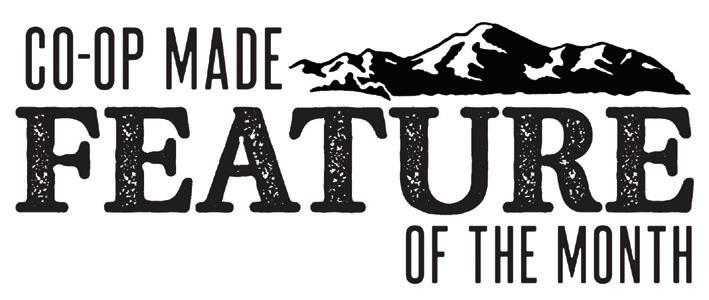
Expanded Curbside Hours. Curbside service will be open 11am–5pm every day from Tuesday, Nov 14th to Wednesday, Nov 22ⁿd.
Bring Joy & Humor to Holiday Meal Prep
You’d think after 17 years of making holiday dinners for family and friends I’d have it down to a T, but mistakes do happen, which have improved my sense of humor over time.
Once, wanting to impress my boyfriend with my culinary prowess, I offered to make bourbon sweet potato pies for his family Thanksgiving dinner. After assembling two pies, I realized I forgot to put salt in them, so I carefully stirred some into each pie. What I didn’t realize was I added double salt to one pie and none to the other. I only came to realize this after my guests had a slice of pie in front of them. Lesson to self: never drink wine while baking. I embarrassedly asked each person to tell me if they tasted salt in the pie and when they said no, I went over and sprinkled salt on their pie and chuckled. The double salt slices were, let me say, “almost edible.”
After working all week, you have one day to make your home beautiful, prepare, and put the holiday dinner on the table. This is a hectic time for many of us. So how do you not make yourself crazy and take the pressure off that one day? Start with a written meal plan at least 2-3 weeks ahead of time. Be kind to
yourself, it’s not that important to prepare everything from scratch, unless you’re a foodie like me. It’s okay to have other people bring a side dish or dessert. And if you prefer not to ask others to bring something, your Co-op will surely have some tasty side dishes or other readymade entrees. On the day of the meal, have a cheat sheet ready for the times to start cooking each food dish, the temperature to cook at, and what time you expect each dish to be ready. That way you can talk to your guests without worry if you get a little distracted. Engage your guests in the preparation and or serving of the meal. It’s a positive feeling to be helpful and included.
Then, there’s the bird. How many of us have heard, “When will the turkey be ready?” As you gaze at your guests eagerly waiting to eat, you beg the turkey to cook faster and give your mother a kiss and tell her to have another cracker with cheese. After years of this scene, I finally started taking a holiday day the day before Thanksgiving and cooked the turkey without pressure from guests waiting to eat. Purchasing turkey parts such as breasts and legs will also hasten cooking time. Cooking the stuffing outside the bird in a separate pan will also speed up the bird’s cooking
Sample Holiday Dinner To-Do List
2-3 weeks before:
Create a written menu for each holiday meal. Assign preparer to each item.
2 weeks before:
Make shopping list from menu. Place special orders at your grocery store.
1-2 weeks before:
Avoid the grocery store crows and shop for non-perishable foods such as croutons for stuffing, nuts, and other food items that will last at least a week in your refrigerator or cupboards.Prepare and freeze items such as stuffing, mashed potatoes, casseroles, and gravy.
1 week before:
Clean the house and set out decorations
1 week to 2 days before
Pick up turkey, roasts, or other perishables from the store and defrost.
2–3 days before
If not already prepared, make your side dishes and refrigerate. Defrost any pre-made rides in refrigerator.
October
by Laura Bady, Board Member
time. Oh, and don’t forget to take the package of giblets out of the turkey carcass before cooking. Preparing side dishes that freeze well 1-2 weeks before like potatoes, stuffing, or gravy will also take pressure off. Defrost side dishes in the fridge a day or two before the meal. And don’t forget that you need ample time to defrost that bird before cooking… sometimes several days. Now you’re ready for meal day. On the day of the meal all you need do is heat up the turkey, carve it, warm the side dishes, and voila! I’ve included an example of how to organize your tasks to help you get through the planning and preparation stages of your joyous, holiday meal. Keep your menu handy on the big day so you don’t forget to serve anything. I cannot count how many times I’ve opened the refrigerator at the end of a meal and said, “Oops, I forgot to serve that.”
Mistakes do happen even to the most experienced cook and host. Recovering with a joke and a laugh and keeping in mind that it’s not all about the food, but more about the joy of sharing a meal with family and friends. Please use the templates and fill in your own Happy Holiday Plan.
Turkey Thawing Time
To thaw in a refrigerator, allow about 24 hours for every 4–5 pounds. For cold water thawing, allow about 30 minutes per pound, and change water every 30 minutes. A turkey thawed in cold water should be cooked right after thawing. Set
Turkey Roasting Time
Tidings of joy and plates full of yum! ‘Tis the season for your favorite flavors with sugar, spice, and everything nice. And we’re here to help make your holiday meals simpler and more memorable with a delectable selection of handmade items. Here are just some of the wonderful foods you can look forward to enjoying from the Co-op this fall.
�Cheese & Chive Scones�
�Deli Soups�
�Pumpkin Lattes�
�Pumpkin Spice Ice Cream�

November
�Rustic Loaves�
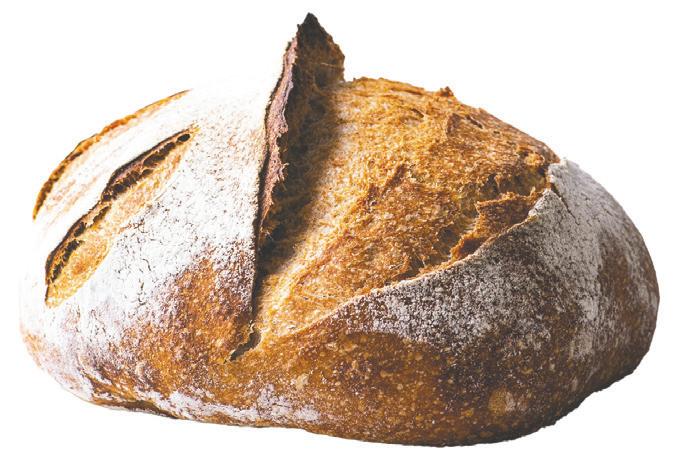
�Cheese Balls�
�Autumn Spice Smoothie�
�Egg Nog Ice Cream�
December
�Cranberry Upside Down Cake�
�Hand Pies & Pot Pies�
�Merry Cranberry Smoothie�
�Cinnamon Ice Cream�
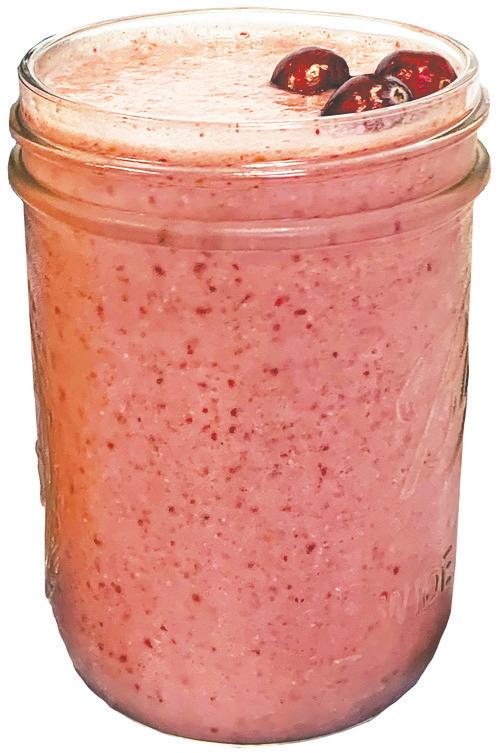
skagit valley food co-op the natural enquirer october–december 2023 11
TURKEY SIZE UNSTUFFED 4–6 lb breast 6–8 lb breast 14-18 lbs 8–12 lbs 18–20 lbs 12–14 lbs 20–24 lbs 11/2 –21/4 hours 21/4–3�1/4 hours 33/4–4�1/4 hours 23/4–3 hours 41/4–4�1/2 hours 3–33/4 hours 41/2–5 hours n/a n/a 4–41/4 hours 3–31/2 hours 41/4–4�3/4 hours 31/2–4 hours 43/4–5�1/4 hours STUFFED
oven temperature to 325ºF. Minimum internal tempature= 165ºF.
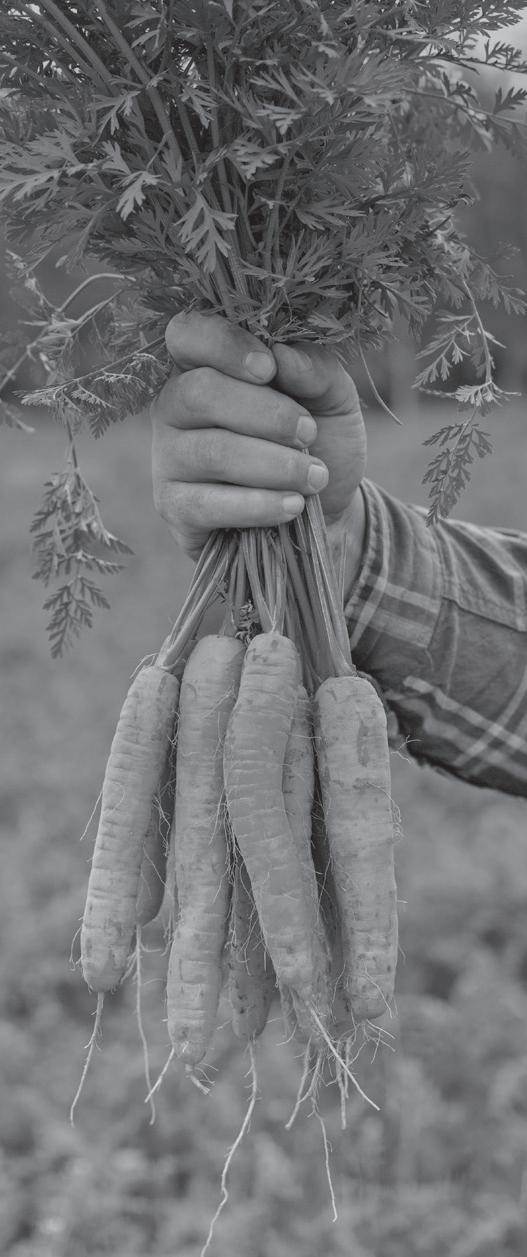
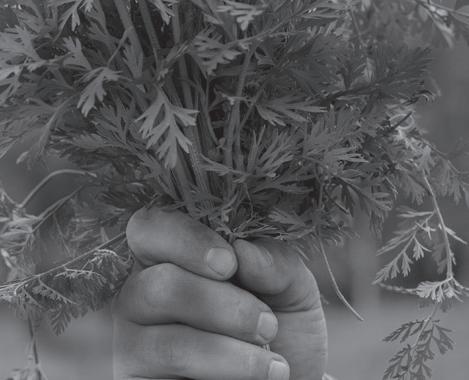
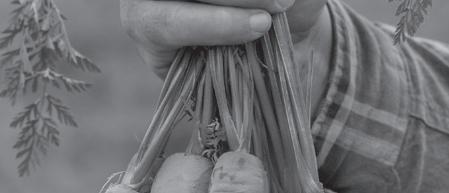





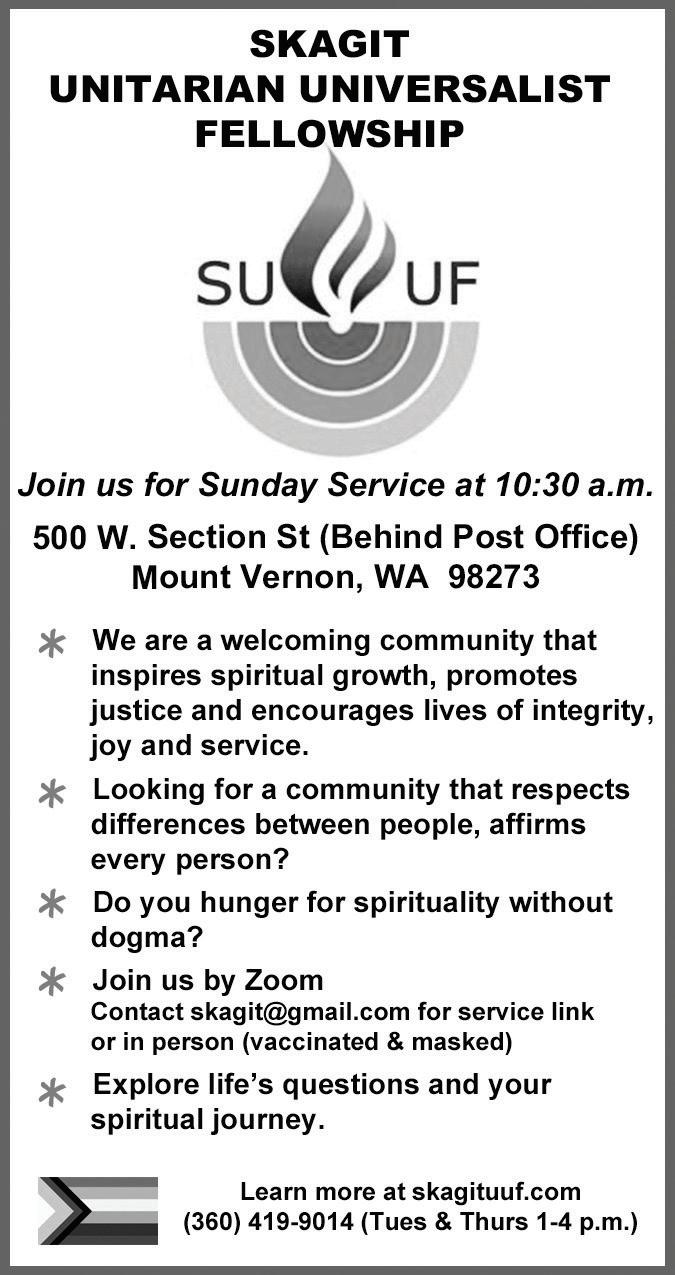






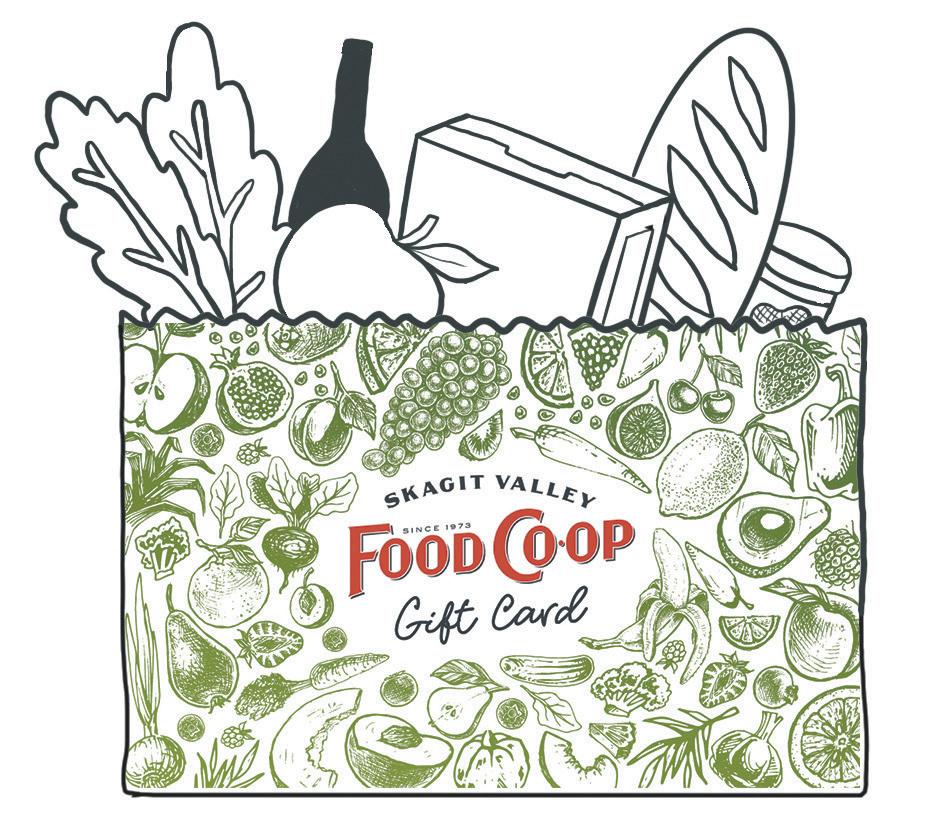
12 skagit valley food co-op the natural enquirer october–december 2023 Join our Winter CSA 10 biweekly boxes, Nov-Mar in Skagit, Seattle & Bellingham Organic Produce from our family farm in Skagit Valley Year round farm stand open daily. Join now at boldlygrownfarm.com nicolev@skagitfoodcoop.com 360.336.5087 x136 We offer discounts for prepayment. All first-time ads must be prepaid. The ad deadline for the next issue (Jan 2024) is Friday, November 17 Advertising Contact the Enquirer Co-op Gift Cards, Always the right choice!
(continued from page 1)
Todd’s Top 10
What are some of the memorable moments throughout the years?
Please bear with a possible personal bias, here are Todd’s Top Ten!
1. Early Operation. The Co-op was run by a wide base of working members, from all over the County and beyond. Monthly meetings were open to anyone, pretty much a voluntary rotating caucus. Issues, like selling coffee, were long debates and challenging, when some people thought consensus and filibuster were the same. Somehow, the Co-op moved along. I think it was really the potluck that held it all together.
2. Fundraising Events. Aside from a small amount of member dues paid, there really wasn’t any money. So, we did “Go Fund Me”, which in those days meant putting on a dance or a dinner to raise funds. The culmination of this was the Magic Skagit Music Festival. The Co-op participated in this event for ten years to prevent the building of a nuclear plant on the Skagit. The Co-op did all the concessions, feeding a couple thousand people great food. Between Magic Skagit money and slowly growing sales and modest profits, we began to think of looking beyond our tiny home.
3. Home. Seeing the empty space, 5000 square feet, at the north end of what is now The Co-op Building, and thinking, “How the hell will we ever fill this space up?” Funny to me now.
4. Manifest Destiny. When space became available we took it. 1985, 1988, 1991, 2000, 2007, 2016.
5. Food Service. That day in 1988 when we opened our Deli, the Deli Next Door. Instead of my anticipated standing back and enjoying the scene, I was immediately sucked into the alternate reality of food service where stuff runs out fast, people are hangry, dishes are always dirty, and there is seldom enough staff.
6. Success. When, after years of being the “longhaired, granola-eating, birkenstocked liberals” it became undeniable that the Co-op was Downtown’s anchor business. Yes, take that! I still get a kick out of that!
7. Floods. There were way too many floods over the years, but a crew always assembled to fill sand bags, stack them on the revetment and in front of the Co-op’s doors, lift product and what equipment we could off the floor. Then, a couple days later, do all this in reverse. One year we had to do that and then repeat it two weeks later. I have to say, it was the ultimate in high-octane cooperation.
8. Buying the Building. What a great feeling: a sense of being in control of our destiny, knowing that our work today could have legs into tomorrow, and be enjoyed by future generations.
9. C-SQUARE. The day-long party we threw when we unveiled to everyone all the great work and fabulous foods we created in our beautiful new building.
10. Me! Retiring one month before the State went into pandemic shutdown. And I just want to say to all the staff that have accused me – I had no hand in planning the timing of COVID!
What are the key hurdles the Co-op has had to overcome over the years?
I think there were three main phases. First, there was all the work of establishing and building a market. We had to not only teach people the WHY of organics and wholesome food, but HOW. Volunteers put in hundreds of hours, going all over the County, teaching people how to cook grains, bake bread, make tofu, and how to can, dry, and grow food. All this at a time when “granola-eater” was used as an insult.
As we gained success at this we sort of created our second challenge: that of running a successful, sustainable business. We’d moved, we expanded, and opened the Deli Next Door. We expanded, again and again. Each effort brought more members, more staff, and more sales. “Benefits”, “Marketing”, “Income statements and Balance Sheets” replaced the discussions of long-grain versus short, or how to pronounce quinoa.
By this time, the Co-op was successful, anchoring Downtown. Our earlier dream of getting people to embrace natural, organic food had been firmly realized. Now, the challenge was how to maintain relevance in these times of grocery consolidation and retail extinction, leading us to the final question…

What would be lost if the Co-op wasn’t there? Does it matter anymore?
That really is the question, isn’t it? What next, and why?
You know, there are some things that I am resolute about: Dessert is an important part of the food pyramid. Grandkids are great. The Seahawks will be better this year. And, that the Co-op matters.
Our efforts, your efforts, are broad and deep. Growing and expanding organic, regenerative agriculture is so critical for our future. Fair Trade: where a few purchases can truly change a person’s life. Truth in labeling and transparency protects what we have helped build from unethical manipulation. Supporting local business and ethical vendors is the right thing to do. What better way to focus on our community than through nourishment, education, and donations? The International Cooperative Principles and our own Mission Statement are righteous in and of themselves.
There are so many things that set the Co-op apart and make it so uniquely special. But for me, it is also personal.
For me, I need there to be a strong co-op long into the future. I don’t want to feel like I am alone in a world that seems increasingly irrational. Knowing, and seeing, that there are thousands of people, who, at some level, embrace the ideals that the Coop embodies. To me the Co-op is not just a store, or a Third Place, it is a sane place – a place I can support, that continues to raise the bar, for us, for our community, and for our future.
I am so thankful to everyone who has helped bring us to this point. In 1973, the odds on the Co-op having a 50th birthday party would not have been all that great, but, every week I’m going to keep putting my money down on the Co-op having a long and prosperous future, and I hope you’ll join me.
Linden Rowell
CASHIER TEAM MEMBER
CO-OP EMPLOYEE SINCE DECEMBER 2022
Favorite Customer Moment:
Personally, my favorite customer interactions are the ones where the customer is able to get me to laugh and it causes my coworkers to laugh as well. There is not enough laughter in the world.
Favorite Item in the Co-op:
Cinnamon Buns from the Deli!
...and for a more practical perspective, the Sky Valley Farm jumbo eggs in the plain container.
Favorite way to spend time outside of work: Taking my Service Dog, Fabio (pictured with me) to local dog parks, learning about canine behavior, baking, and helping with the care of my potted apple trees.

Customer Service Awards for Linden:

Though Linden has been with the Co-op for less than a year, she’s made a big impression on you, our shoppers! Here are just a few of the kind words you all had to share about your interactions with Linden:

“Linden is such a sweet cashier! I ran into her a few weeks ago as she was waiting (off work) for something in the deli. Didn’t recognize her at first (out of context) but I said “Hey, now I know you -- you’re usually on the other side of the counter!” And she laughed in recognition. She’s the best!”
“It was great to have the opportunity to go through Linden’s checkout line. I’ve seen her shopping in the store several times when she’s not working and it makes me feel good to know that she actually uses the same products and has the same shopping experience that I do.”
“She helped me clarify my EBT snap benefits because sometimes if the balance is low it is declined. She was very helpful and kind.”
skagit valley food co-op the natural enquirer october–december 2023 13
STAFF PROFILE
Todd speaking at the Jubilee
Festive Fall Foodie Finds
Pumpkin Spice Everything!
Falling leaves, rainy days, and pumpkin spice, oh my!
Pumpkin spice isn’t just for coff ee anymore – fi nd sweet treats, tea, and even eggnog to spice up your life this season.
Local Pumpkin Spice Eggnog
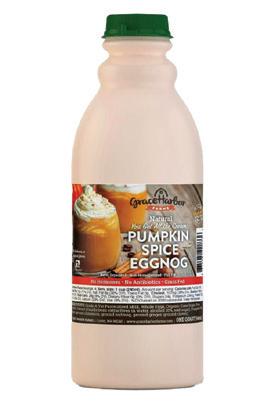
GRACE HARBOR FARMS
by Leigha Staffenhagen
All Treats, No Tricks
The scariest part of Halloween? Candy packed full of preservatives, high fructose corn syrup, and artificial colors and flavors. The sweetest part of Halloween? Candy made from fruit juice, fair trade chocolate, and real ingredients you recognize. Here’s just a few of our faves:
YumEarth
Can’t wait until December for eggnog? No problem. Grace Harbor has you covered with an eggnog flavor perfect for fall. Spicy, noggy, and extra creamy, pair it with a couple of espresso shots to start your morning the seasonal way. Find it in the dairy case.
Orange Clove & Pumpkin Spice Tea
YOGI TEA
Yogi’s seasonal teas are back for a limited time. Orange clove is sweet and just a dash spicy, while pumpkin spice is earthy, herbal, and oh-so-cozy. In the tea aisle.
Pumpkin Spice Chai Latte Concentrate

TAZO TEA

Just below our packaged teas you’ll find a shelf dedicated to flavorful concentrates like Thai tea, herbal tea, and chai tea. And for the fall you’ll find Tazo’s Pumpkin Spice Chai Latte concentrate. Pumpkin and chai spices come together for a fancy cafe-style cup of cozy at home.
The Co-op’s Pumpkin Spice Treats
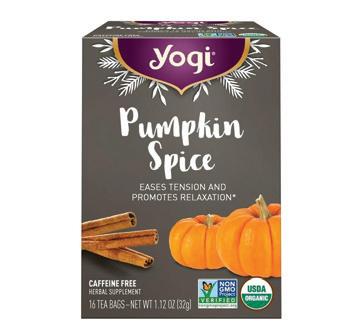
There’s nothing basic about our pumpkin sauce! Made at the Co-op with real pumpkin and everyone’s favorite fall spices, it’s seasonal, sensational, and sure to fill that fall craving. Try our Pumpkin Spice Latte, Pumpkin Ice Cream, and Autumn Spice Smoothie before they’re gone.
Bubbles & Brews
Special occasions call for special bevvies. Meet some new locals and keep your eyes open for all the seasonal changes happening in Beer & Wine!
The Co-op’s Cider ‘73
SKAGIT VALLEY FOOD CO-OP + RAGGED & RIGHT CIDER PROJECT
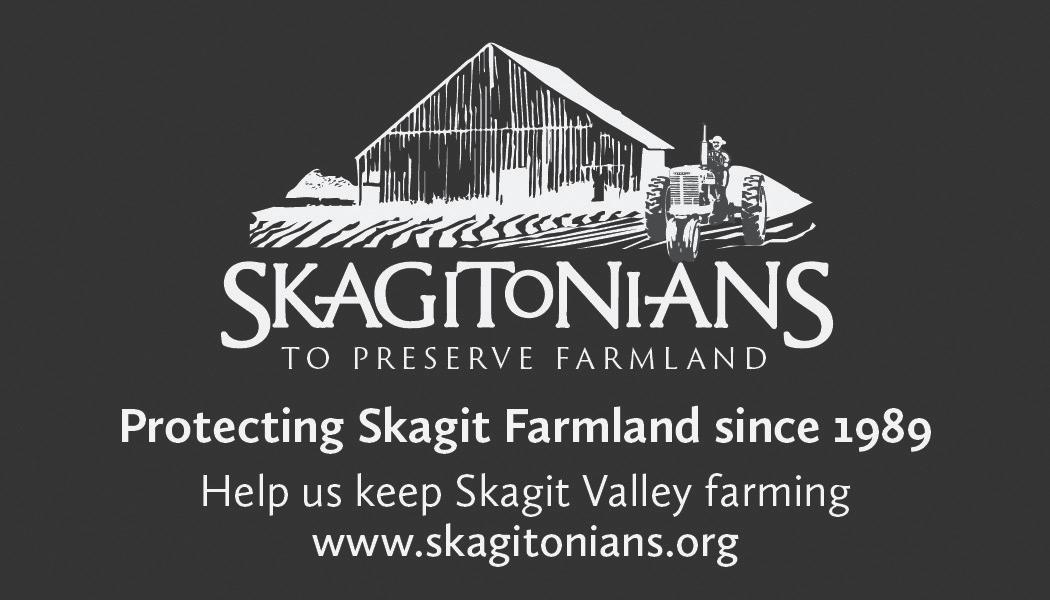
Coming soon to our hard cider lineup is the Co-op’s Cider ‘73! Made in collaboration with local Farmstrong Brewing’s Ragged & Right Cider Project, our Cider ‘73 is a mix of apples from WSU and Bellewood Farms in Lynden. Crisp with a subtle barrel-aged complexity, this cider is the perfect balance of tart and sweet.

VERA WELLNESS CENTER
303 Vera Street Mount Vernon, WA
Acupuncture
Barbara Paul-Mayer, MAc. LAC 360-336-6809
Core Synchronism
Julie Kongs 360-630-6742
Colon Therapy
Jayne De Felice, I-ACT Certified 360-336-5220
Reiki & Theta Healing®
Valerie Jean Rose, Reiki Master 360-840-1723
Massage Therapy
Spencer Kelliher, LMT 425-231-7605
Rolfing Structural Integration®
Nils Larsen 360-293-5866
Clinical Massage & Lymph Drainage
GuruBani Whitney, LMT, CLT, CPHt, RH www.alchemy-wellness.co
Live a More Vibrant, Balanced, Vital & Healthy Life!
COMMUNITY BULLETIN
Erin Vanhee, Herbalist, LMT is teaching an herbal medicine making for winter workshop at the Apothecary Wellness Center & Spa in Burlington on Sat. November 4 from 10:30am–4:30pm
Those interested in extended herbal medicine training can apply for the 2024 Herbal Immersion beginning February 2024. Learn more at Erinvanhee.com.
Fruity, gummy, sweet, and chewy! YumEarth candies are allergy-friendly and will remind you of some of your favorite fruity candies, minus the yucky stuff. Choose from gummy fruits, crunchy giggles, and lollipops.
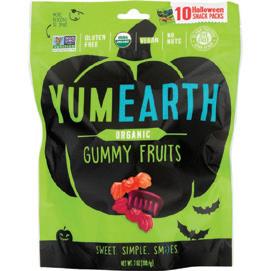
Free2b
Made without 12 of the most common allergens, including peanuts, dairy, tree nuts, and sesame, Free2b’s gluten-free chocolate sun cups are the perfect option for kiddos with different dietary needs. And they’re just as irresistible!

OCHO
All organic, all fair trade, OCHO’s small-batch candies are made with real ingredients in small batches. These are the candies you’ll actually want to steal from your kids’ Halloween haul… we promise we won’t tell. OCHO’s variety pack of chocolates include coconut, caramel, and peanut butter.
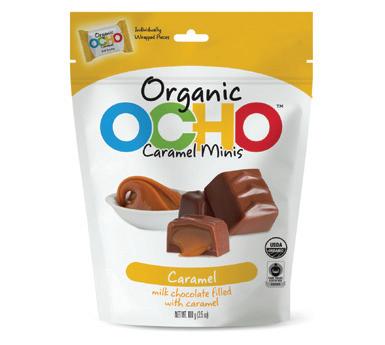
Piedras de Chocolate from Mitica
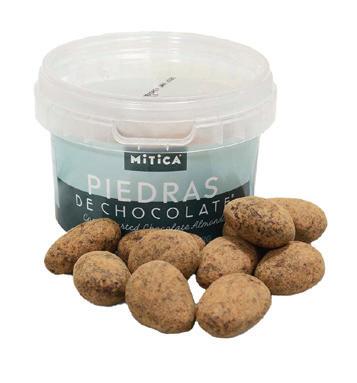
Because grown-ups like Halloween, too. These cocoa dusted almonds can be enjoyed as-is or as a sweet addition to a charcuterie board. Pair them with sweet dried apricots, hard cheeses, and salty prosciutto for a well-rounded snack tray. And don’t forget the Lopez Island Vineyard & Winery Sangiovese!
El Sueñito
¡Bienvenidos and Welcome! We’re proud to carry brews from Washington’s first gay and Mexican-owned brewery, El Sueñito! Translating to “the little dream” in Spanish, El Sueñito celebrates founders Dennis and Osbaldo’s Mexican heritage and their love for beer and the Pacific Northwest. Available in the beer aisle, or just up the 5 in Bellingham. Be sure to try their tamales if you end up visiting!
Seasonal Sips
Pumpkin beers, winter ales, and sparkly bubbles to light up the night, our Beer and Wine Department is full of holiday cheers. Need pairing recommendati ons for turkey, ham, or your fancy charcuterie? Ask Kristi an or Ruby, the two who know best!
Amethyst by the Sea
Caryn Boyd Diel is now offering treatments at Coherence Wellness Center in Mt. Vernon.
She has been working with clients and students around the world for over 40 years.
Specializing in Abdominal Health and Energy Medicine.
You can read about her offerings at the website: AmethystbytheSea.com
Call to make an appointment (505) 670-3538

The Dancing Camel Yoga Studio
910 15th Street Anacortes
Classes Daily!
New Student Specials
Classes for all abilities
In Studio & Virtual Private Lessons available
Anusara, Vinyasa, Kundalini Sound Baths & more!
Anusara Teacher Training
200 hour course begins 5/1/22
Are you a teacher?
Have a skill or subject you’d like to share?
We can host your class!
Check out our retail!
Manduka Equipment & Clothing.
Books & Gift Items
For More Information or to Sign Up go to thedancingcamelyoga.com
14 skagit valley food co-op the natural enquirer october–december 2023
NEW + NOTABLE
LIV, Laugh, Love (and Sip): Lopez Island Vineyards & Winery

I love a good wine tasting. My friends and I have done many a-rounds of Woodinville’s winery loop. I’ve sipped on whites, and reds, and rosés overlooking Lake Chelan. Heck, I’ve even been to a blind champagne taste test where we disguised cheap and expensive bottles of bubbles with paper bags to see which reigned supreme. Unsurprisingly, my $15 bottle of Co-op bubbles came in 2nd place.
But I’ve never experienced a tasting quite like the one a few of us from the Co-op were recently treated to at Lopez Island Vineyards and Winery (LIV).

What began as a cloudy September morning, quickly evaporated into a gorgeous early-fall day, offering all of us a fantastic Thursday out of the office. After a smooth and sunny boat trip out to Lopez Island, we were greeted at the dock by one half of the LIV team, Maggie. In very Pacific Northwest fashion, we piled into her Subaru and took the quick windy drive over to LIV’s peaceful slice of Lopez Island’s north end. After giving the farm dog Roca lots of love and pets and taking time to notice the grapes winding their way around wellworn trellis, we made our way into LIV’s makeshift tasting room/bottle labeling space/trophy and award room/farmhouse.
Maggie pulled out the bottles and started the tasting with a detailed history of her and her partner Brent’s life on Lopez Island. Brent, the winemaker and other half of team LIV, is described by Maggie as detail-oriented, particular, and mathematical in his approach to the art and science of winemaking, and, of course, well balanced by Maggie’s effervescence, zest, and spirited love for the business. As one of the first UC Davis graduates to double major in both enology (the study of winemaking) and viticulture (the study of grape cultivation), Brent has the unique experience of both successfully growing grapes on the west side of our state (not an easy task!) and transforming them into some really incredible wine (also not easy!). Throughout our conversation, Maggie reflected on the way in which Brent can notice even the smallest of variations between one vintage and the next, and while he chalks it up to science, she’s blissful in knowing that as with life, you rarely produce the same results twice when dealing with the ever-changing climate, temperatures, and personalities of the Pacific Northwest.
Maggie kept us waiting. Before we could dive in, we followed Maggie out to the vineyards, under the elaborate row covers designed to keep the island dwelling birds, bees, and raccoons away from the nearly 40-year-old vines. Yes, you read that correctly: Brent and Maggie have been dutifully tending to some of their grapes since 1987. In fact, LIV is the oldest vineyard and winery in San Juan County. Walking through the rows, we were encouraged to try some of the greatest grapes I have ever tasted in my life. Deeply flavored, juicy, and unbelievably complex, it’s easy to see how these grapes translate into a unique pour that calls for lots of sipping, swirling, and contemplation. Maggie shared some of the pitfalls and grape growing tricks she and Brent have learned from trial and error over the years. I’d be remiss to not also mention Maggie’s notes on how to properly, and efficiently, prune back older vines – this led to an anecdote about how some
by Leigha Staffenhagen
new fancy electric pruners have made the job much more pleasant over the years, despite some initial skepticism. After basking in the sun for just a bit longer, we made our way back into the tasting room.
One by one, we tried four of LIV’s wines we recently brought in, starting with the extra-special, and my personal favorite, Madeleline Angevine, commonly known as Mad Angie to those who’ve had it. If you aren’t familiar with the Madeleine grape varietal, you’re not alone. It isn’t a grape you’ll see often, if ever. A French grape that’s also grown in Germany, and you guessed it, the Pacific Northwest, Madeleine Angevine grapes grow best in cooler climates. In fact, aside from some vines on Vancouver Island, LIV is the only vineyard growing Madeleline Angevine in the Pacific Northwest. Dry with a low acidity, Mad Angie has a lightly sweet flavor and a slight zing, thanks to the method this wine is oak barrel-aged. According to Wikipedia, “In Washington State, the grape has developed a cult following in the Puget Sound region for its floral character and easy-drinking nature.” Cheers to that.
Next, we gave the Siegerrebe a try. Following a giggly discussion of the proper way to pronounce this German wine (it’s still up for debate), we were greeted with a deeply aromatic glass that smells as sweet as the grapes themselves taste. A trick of the nose! The taste is much less fruity and much more crisp and dry, with a dash of spice. If you want a light, drinkable glass of wine, look no further than the “Zieggy.”
Up next was the Chardonnay. Personally, I’m not usually a Chardonnay gal – I’ve never felt fancy enough for it, and a dry Pinot Grigio is my default. But this Chardonnay received resounding sounds and head nods of delight from the whole group, myself included. My palate was flooded with perfectly sweet notes of vanilla and fruit, with a dash of new oak, thanks to the barrel fermentation process of the wine. It still had a buttery mouthfeel, which more experienced Chardonnay drinkers will appreciate.
Last, but definitely not least, was LIV’s Sangiovese. Words I scribbled down to describe this red? Buttery, savory, creamy, slightly sweet. I’m not one for a sweet red – it usually gives me a headache before I’ve even taken a sip. Needless to say, the Sangiovese definitely hit the spot. Featuring grapes grown in the Rattlesnake Hills on Elephant Mountain – east of the Cascades – this delightful wine has ripe cherry and blackberry flavors followed by a crisp, spicy finish.
I think I speak for the whole group of us when I say that Lopez Island Vineyard and Winery’s offerings are superb. Finding really good wine this side of the state is rare, and LIV sure does have the science (and art) of grape growing and wine making down to a T. While this is certainly due to Brent’s scientific mind and detailed approach, Maggie’s vivacious energy and skill for vineyard pruning is certainly a huge piece of their success as well. Grab a bottle (or two) of this hyperlocal wine and LIV a little!
Cheesemonger Jeni’s LIV Pairings










Let’s not forget the incredible spread of cheese, crackers, meat, olives, and fruit our Cheese Manager Jeni prepared for us to snack on after our winery trip. Jeni’s the best. Here are her pairing suggestions for each LIV wine. You can’t go wrong.
Madeleine Angevine
Delice, a French triple cream brie and a sweet Evercrisp apple
Siegerrebe
Mango Ginger Stilton and Marcona Almonds
Chardonnay








Daniels Reserve or Wookey Hole Aged Cheddar and dried apricots
Sangiovese
Cambozola or Point Reyes Blue Cheese, and dark chocolate
skagit valley food co-op the natural enquirer october–december 2023 15
Thank you for being part of the Co-op! 10% OFF one shopping trip in October Member number required for redemption. Coupon valid for 1 (one) shopping visit at the Co-op. Excludes special orders, staff/board purchases and a few select items. For current (paid in full or paid to date) Skagit Valley Food Co-op owners only. Expires 10/31/2023
VENDOR SPOTLIGHT
Tony and Maggie chatting over the vineyards.
Bottles available at your Co-op
Golden Jubilee Recap
WOW! What a night! Our deepest gratitude to each and everyone of you who attended our Golden Jubilee on August 9th and a very heartfelt thanks to the thousands of individuals who have supported the Co-op in one way or another over the last 50 years to make the evening possible in the first place. It was an honor to celebrate such a momentous occasion with friends, family, colleagues, and a sea of familiar cooperators.
The Golden Jubilee took place from 4pm-8pm on the Skagit Riverwalk, adorned with tables, chairs, tents, bright florals, and a massive stage. Music was played! Food was eaten! Fun was had! Memories were shared, and memories were made. The afternoon began with a few words from Co-op General Manager Tony White, and of course, food and drink from your Co-op, COA, The Skagit Table, Slow Food Youth Network, Taste of India, and District Brewing. No party is complete without a beer garden, so thank you to District for opening its patio and putting our Co-Hop Anniversary Ale on sale!
Our downtown neighbors Tri-Dee Arts and ContoursFX showed up, too! Tri-Dee helped tie-dye nearly 500 Co-op tees, while artists from ContoursFX painted face after tiny face. The lines were long, but worth it.

Musical performances on the Magic Skagit kicked off with a vibrant set of oldtime fiddle tunes by The Nematones (whose band members include local farmers and Co-op Board Members), followed by another up-and-coming local group, The Wes Jones Trio. We then had the pleasure of hearing from six individuals whose stories of and involvement with the Co-op are impactful: longtime General Manager Todd Wood, former Board Member Frances Ambrose, Board President Tom Theisen, farmer (and voracious advocate of local and organic agriculture) Anne Schwartz, Viva Farms Executive Director Michael Frazier, and the current General Manager Tony White. And finally, all dressed in blue, Yogoman Burning Band brought the family-friendly funk to tie a bow on a brilliant 50th celebration. It was something special. Here’s to the next 50 years. Cheers!
Call for Photos
If you have any photos from the Jubilee you’d be willing to share, please send them to: community@skagitfoodcoop.com







elSage Shop
PAVE Jewelry & Design
Fran’s Hallmark (Makers)

Bare Boutique
Calico Cupboard
La Catrina
Forte Chocolates
Tacos Tecalitlan
Astraea Bridal
Poirier’s
Skagit Running Company
Harmony Fields
Between each set, we gave away nearly $4,000 worth of prizes donated by amazing businesses right here in Skagit. We also received several table bouquet donations, and the majority of flowers used in the arches and other bouquets came from Jesalyn at Mossy Gate Flower Farm and from Seattle Wholesale Grower’s Market Cooperative. Nick of Napping Lion Farm strung together all the lovely
Chuckanut Brewery
Bloom Apothecary
Katt’s Westside Stories
Terramar Brewing
Mt. Baker Gymnastics
Lang’s Horse and Pony Farm
Skagit Valley Burgers
Christianson’s Nursery
handmade. la conner
Mystical Wares
Skagit YMCA
Skagit Skate
marigold garlands. The folks at Seattle Wholesale were particularly kind, helpful and generous. They graciously offered to pick up our huge flower order from Seattle and drop if off at the Co-op because they happened to be there for a delivery. THANK YOU to all these donors. If you want to support local this holiday season (or any season), start here:
Revival Cocktail Lounge
LIDO Collective
Bee Merry Farm
Stowes Shoes
COA Mexican Eatery
Skagit Valley Food Co-op
Avalon Links
Adrift Restaurant
Blue Cow Car Wash
13moons
Water Tank Bakery
Island Adventure Cruises
Kids Stuff
The Apothecary Spa
Wild Valley Apothecary
Tulip Valley Farms
bLoom Floral
Napping Lion Farm
Shelbee Blooms
Maggie’s Garden & Stems
Wild Child Flowers
Blackburn Gardens
Grass Becomes A Wave
Mossy Gate Flower Farm
16 skagit valley food co-op the natural enquirer october–december 2023
photos by Katheryn Moran Photography







































































































































